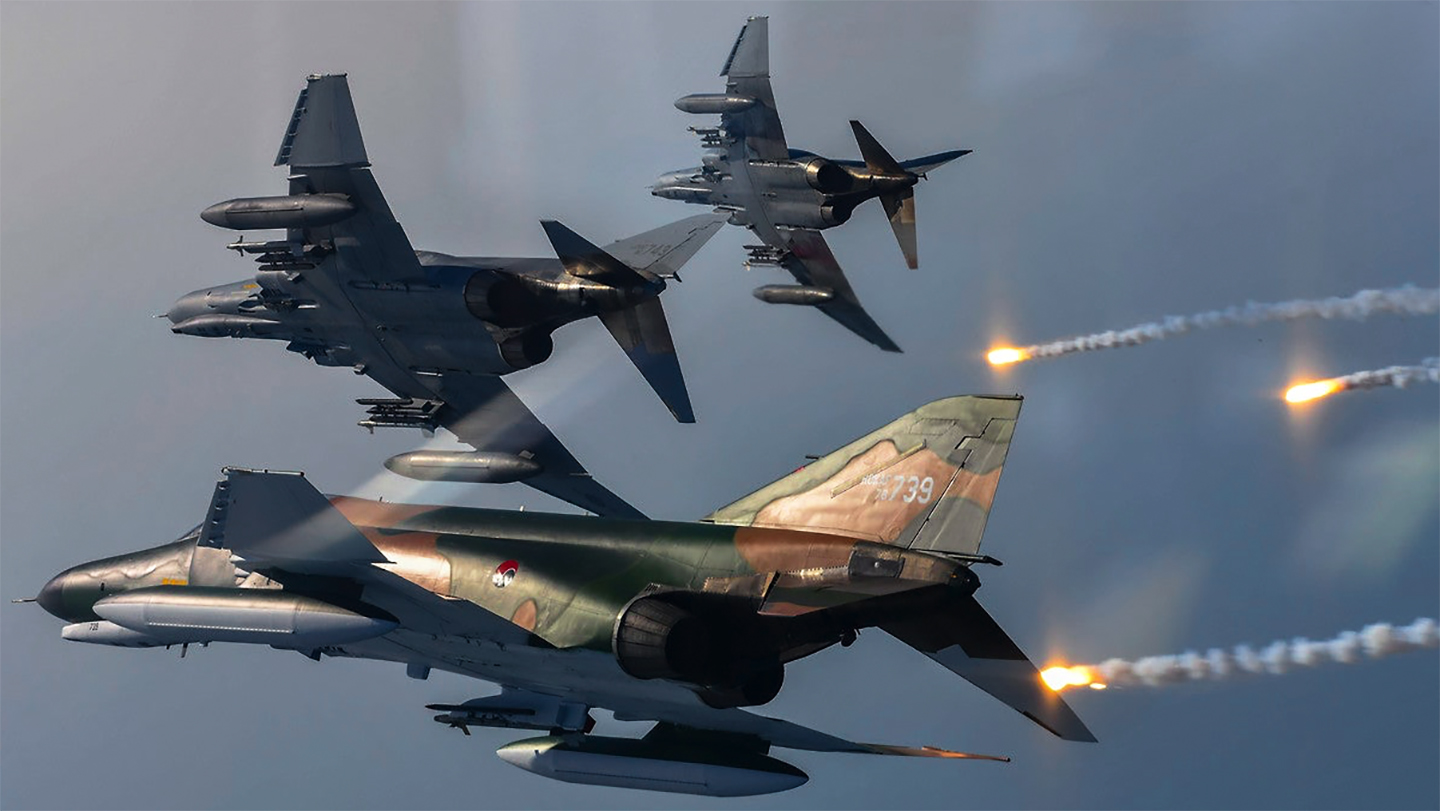South Korea, one of only four nations that had still been operating the classic F-4 Phantom, formally retired the Cold War-era fighter today. The decommissioning ceremony saw the Republic of Korea Air Force (ROKAF) provide an “honorable discharge” for its last Phantoms, which had played a hugely important role in the defense of the nation for 55 years. The event also saw the air arm looking to the future, with involvement from the F-4’s successors, including the F-35A stealth fighter. Ultimately, the Phantom will also be superseded by the locally developed KF-21, an aircraft that you can read more about here.
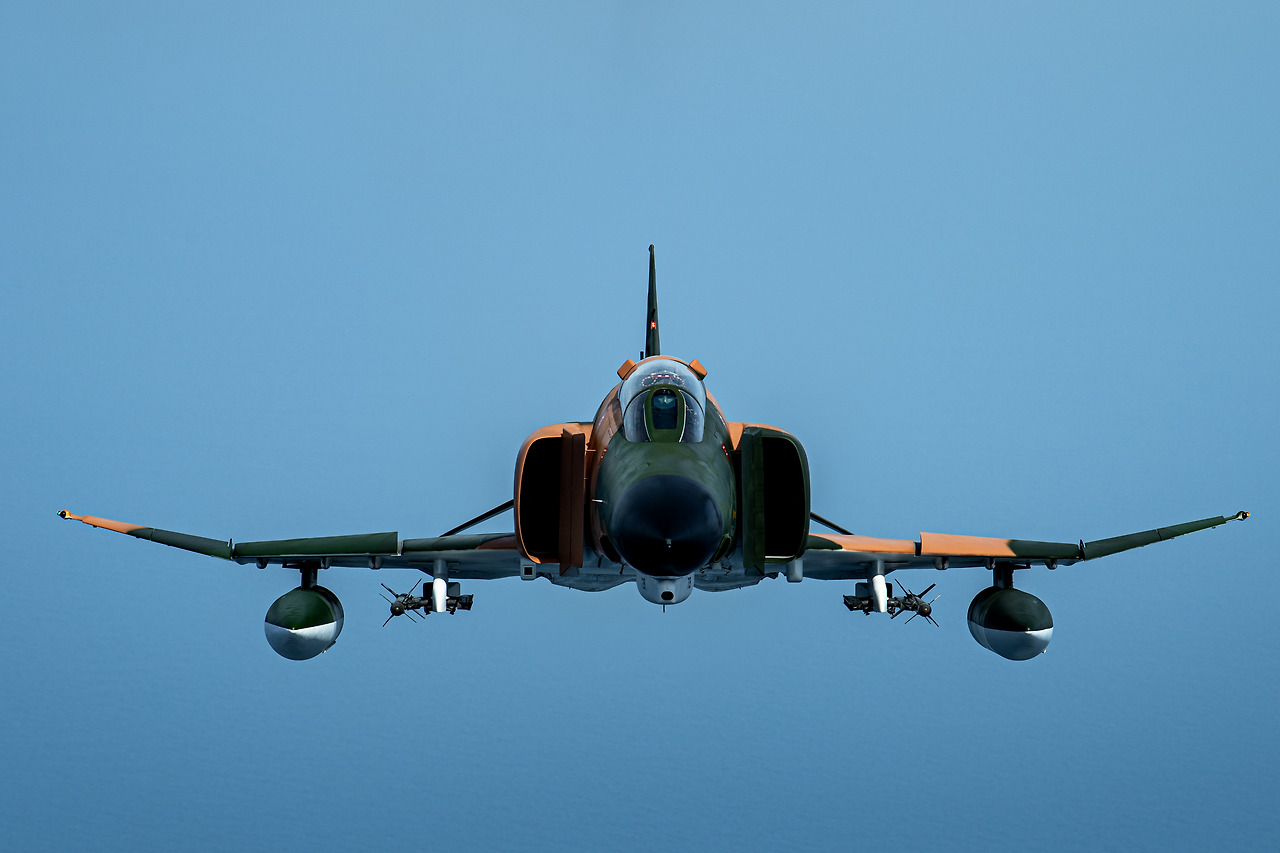
The decommissioning ceremony took place today, June 7, at Suwon Air Base, in the northern Gyeonggi province, and was presided over by South Korea’s Minister of National Defense Shin Won-sik. In attendance were various other military leaders, past and present, as well as former pilots and maintenance crew associated with the ROKAF F-4. The emotional intensity of the event was such that more than one of the former ROKAF Phantom crew in attendance was seen shedding a tear. Also at the event, on behalf of TWZ, was contributor Roy Choo.
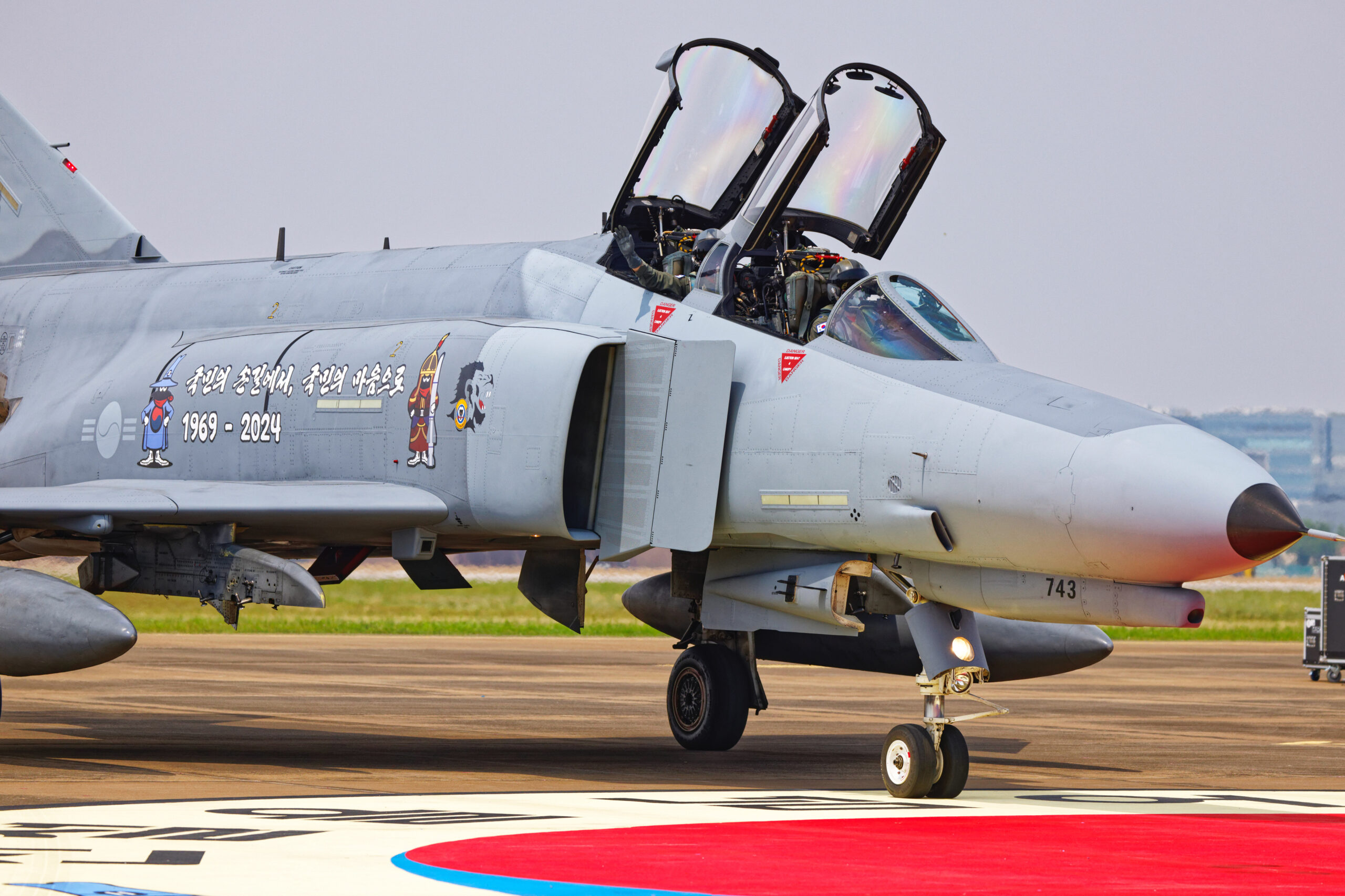
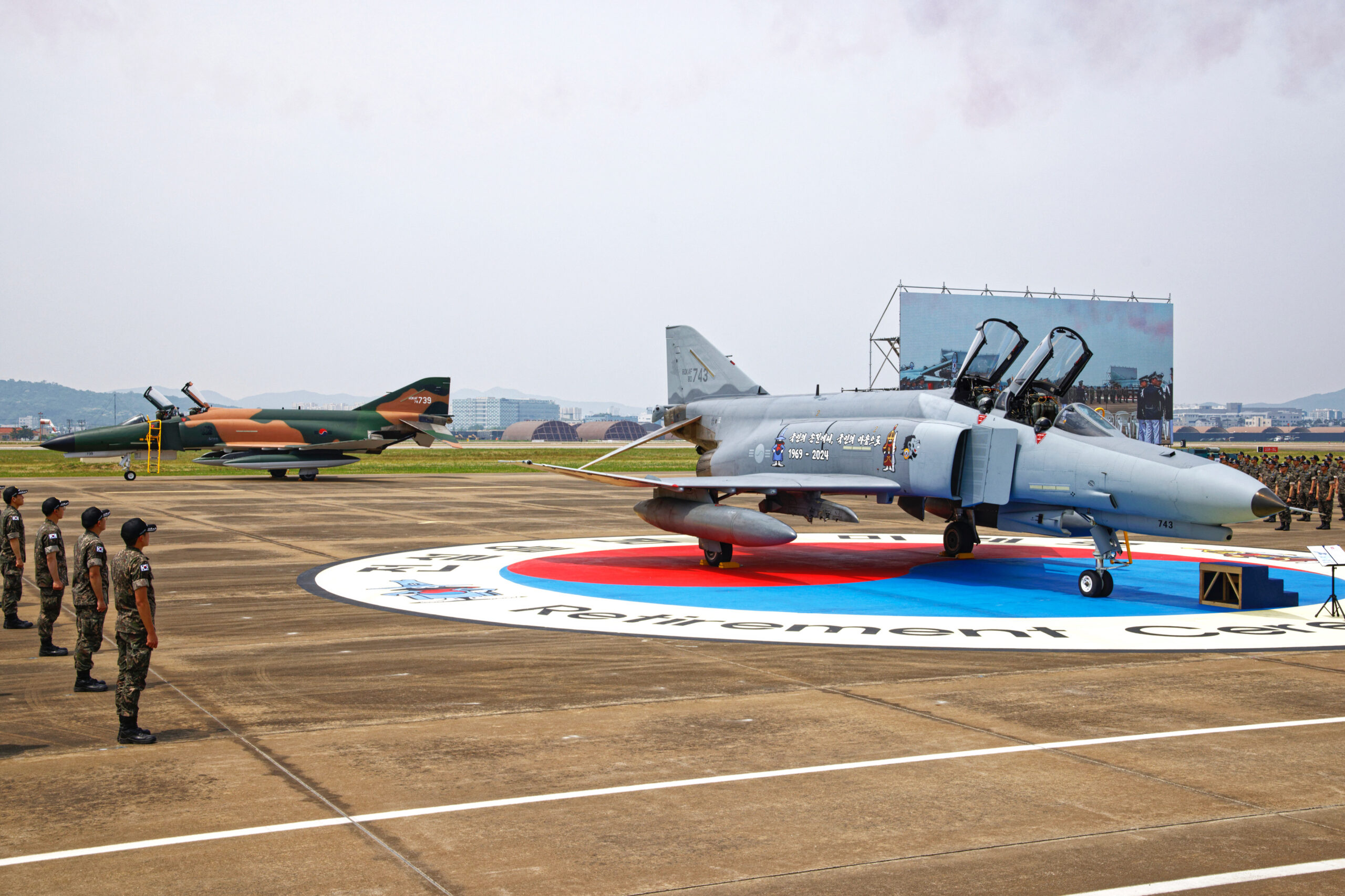
In his address, Minister of National Defense Shin said: “The past 55 years with the Phantom have marked a history of victory for South Korea. With the introduction of the Phantom, the guardian of the free world, the Republic of Korea swiftly superseded North Korea’s air power, and since then, North Korea’s air force has been no match. The Phantom never dies; it just fades away.”
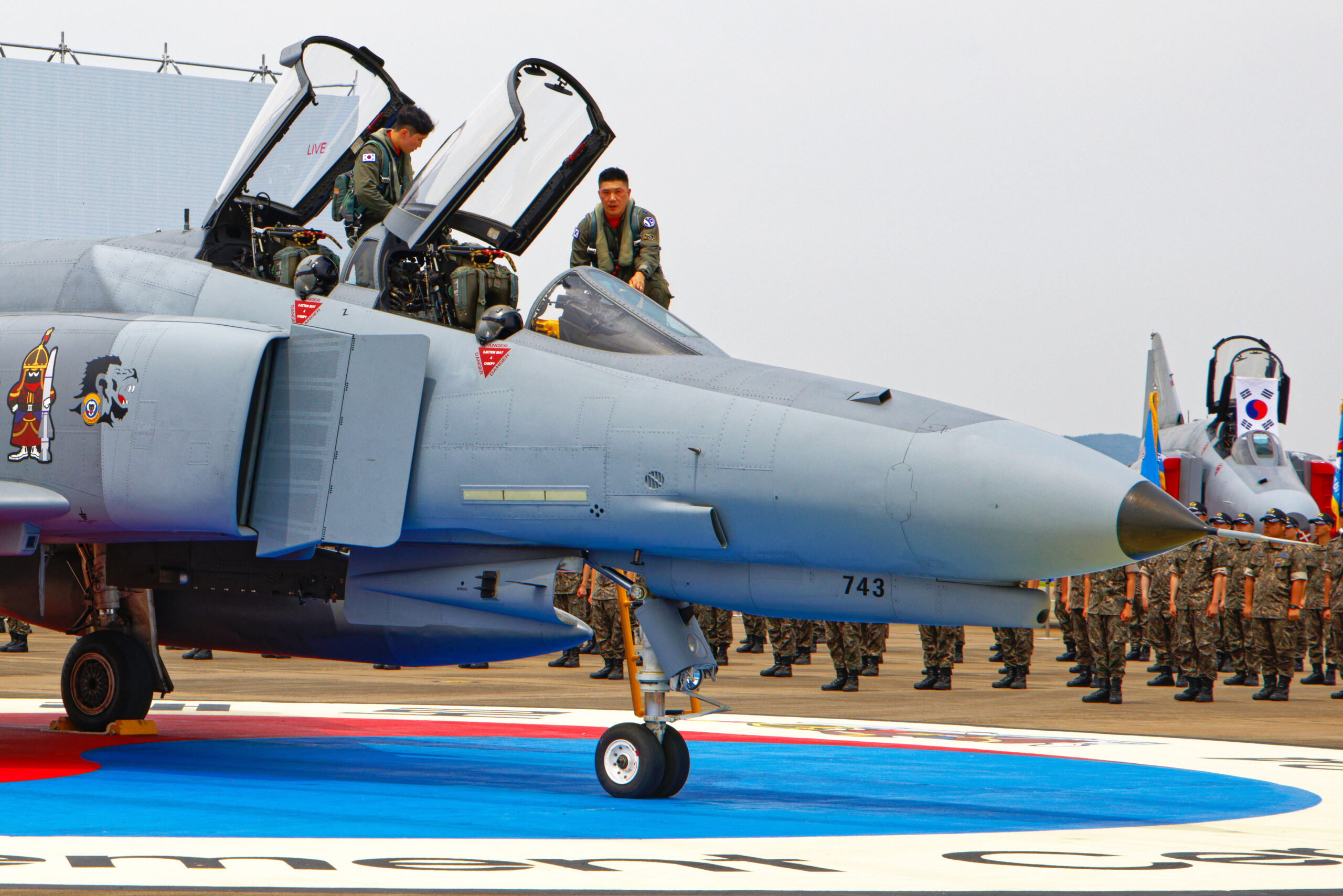
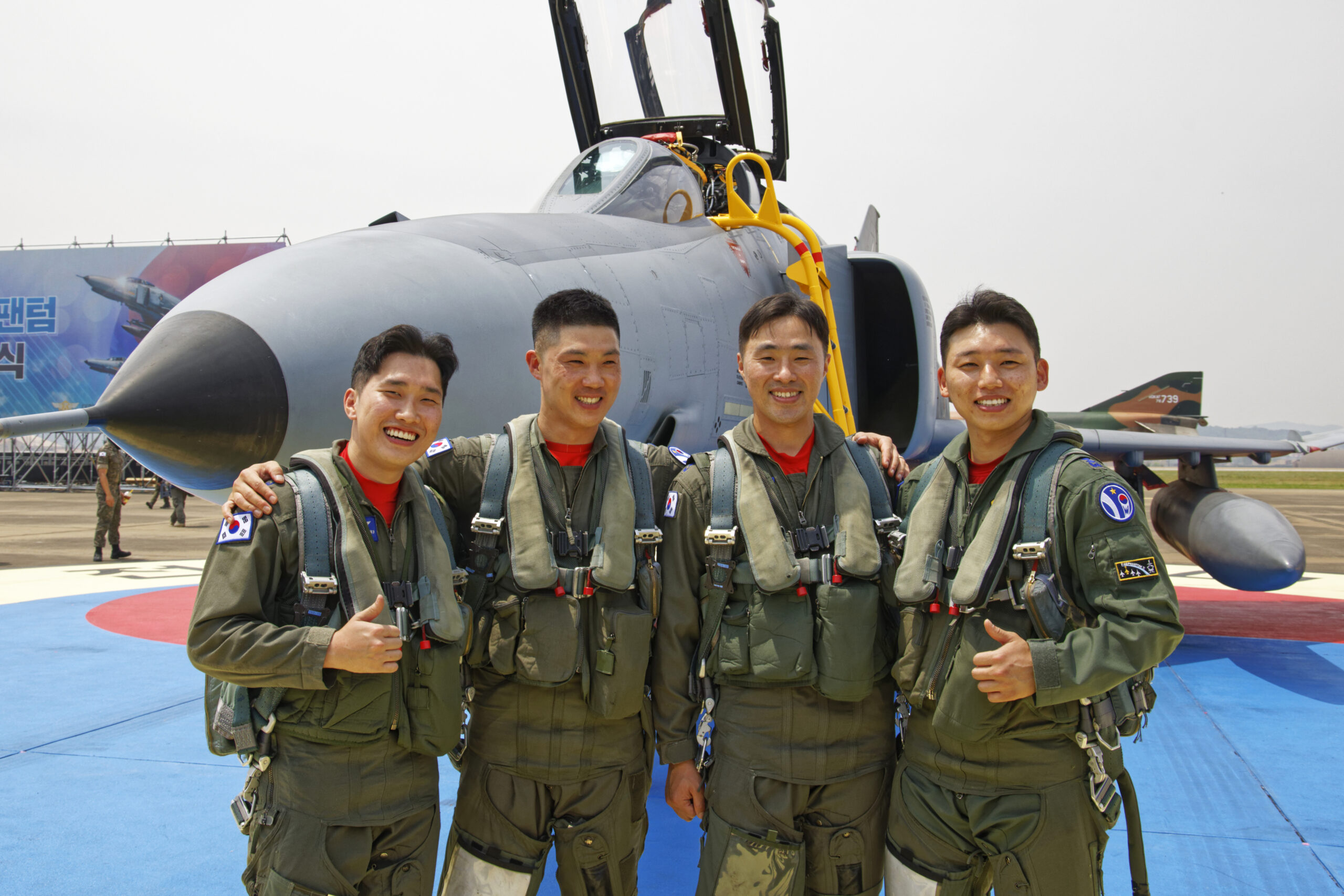
The ceremony included recognition for ROKAF Phantom aircrew who had lost their lives while on duty, the presentation of commendations and citations to former and current F-4 personnel, and a very last sortie. On the order of Minister of National Defense Shin, a pair of Phantoms launched from Suwon for the last time. One of those jets was painted in the ‘jungle’ camouflage pattern that recalls the scheme first worn by ROKAF Phantoms.
Once the two Phantoms taxied back after their sortie, Defense Minister Shin hung congratulatory wreaths on the nose of the jets and wrote the commemorative message on the fuselage of one of them: “Beyond legend, into the future!”
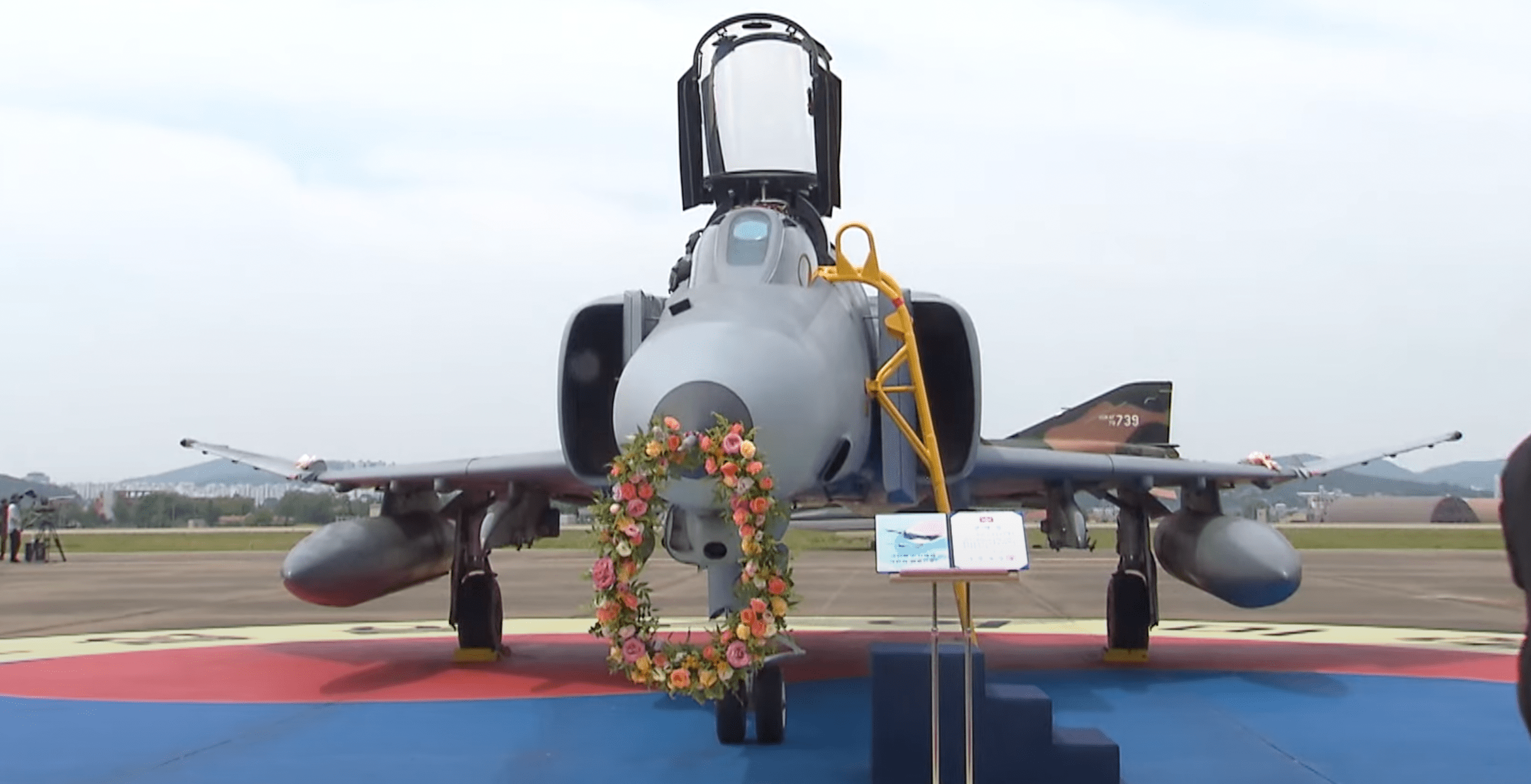
The ROKAF’s Black Eagles aerobatic team then performed a display, with their T-50B Golden Eagles, while flights were then performed by other current ROKAF fighters.
First, five F-16s launched a total of 55 flares, commemorating the F-4’s 55 years of service in South Korea since its introduction in 1969.
Next, a formation flight was performed by six F-16s and five FA-50s. The six F-16s symbolized the initial introduction of the first six F-4D aircraft in 1969, while the FA-50s represented five additional F-4Ds that were funded using donations from South Korean citizens, becoming the so-called ‘Pilseung Squadron.’
Following them, two reconnaissance-configured RF-16s, which took on the mission of the RF-4C recce Phantom, performed a flight over the base.
Next came a formation of F-15K Slam Eagle, F-35A, and F-16 aircraft, which are stationed at air bases in Daegu, Cheongju, and Jungwon, each of which was formerly home to Phantoms.
The aerial displays ended with three F-35As, symbolizing the successful transition from the third-generation Phantom to the fifth-generation stealth fighter.

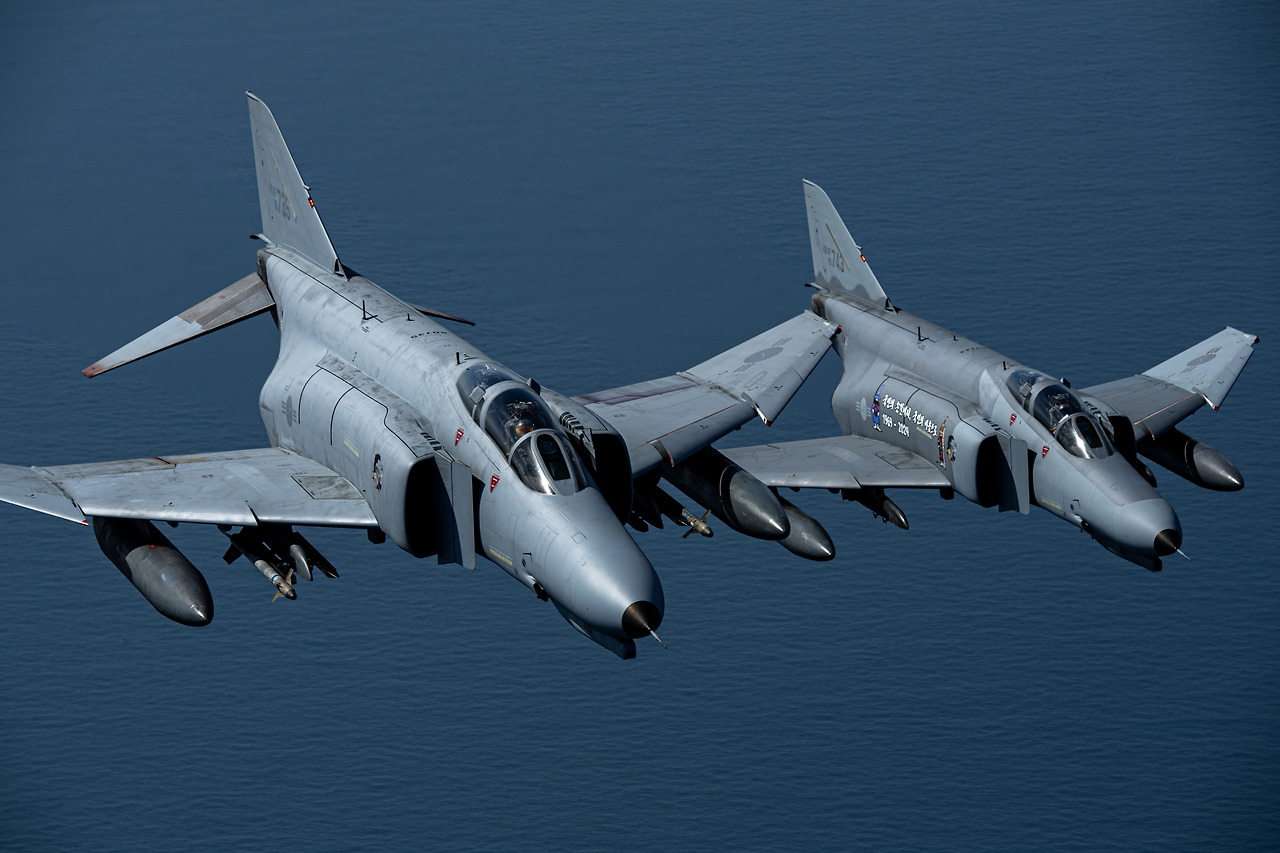
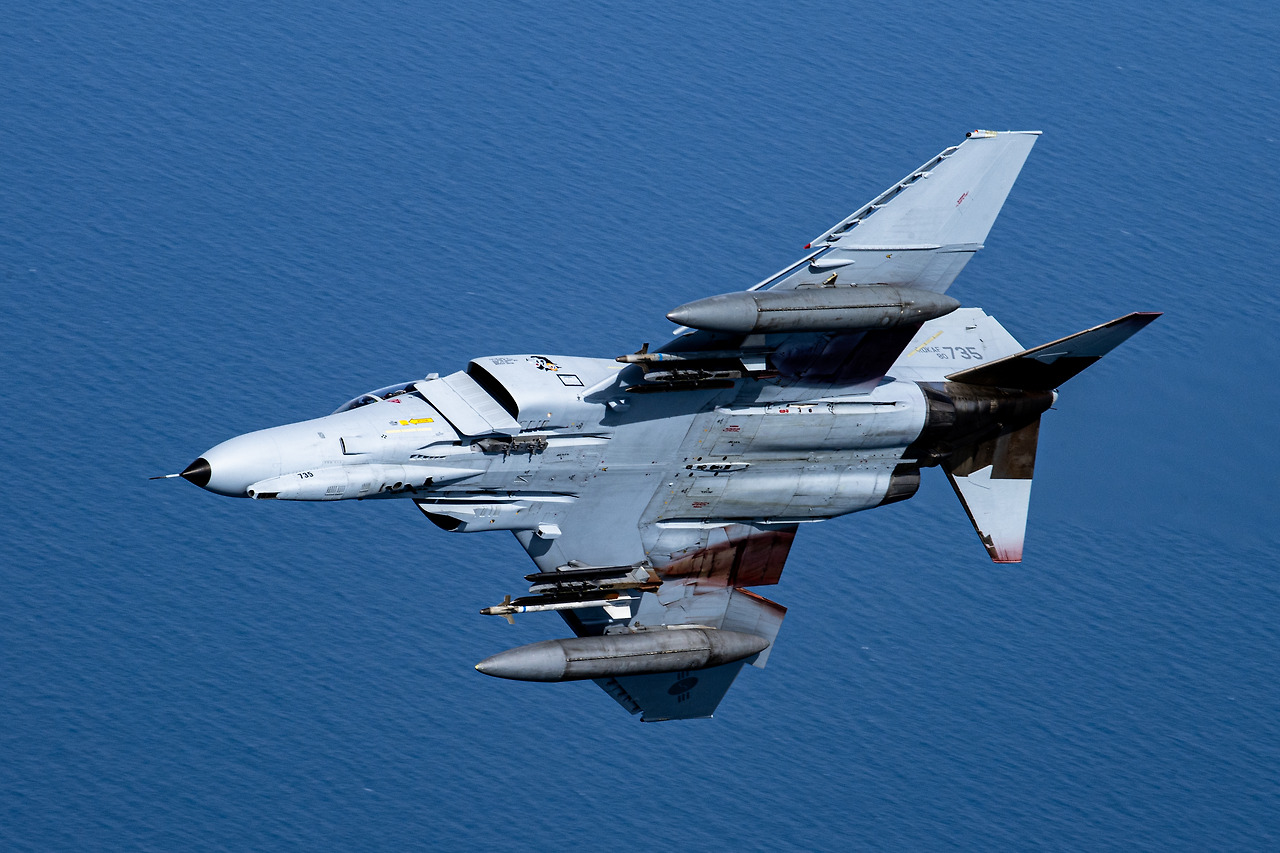
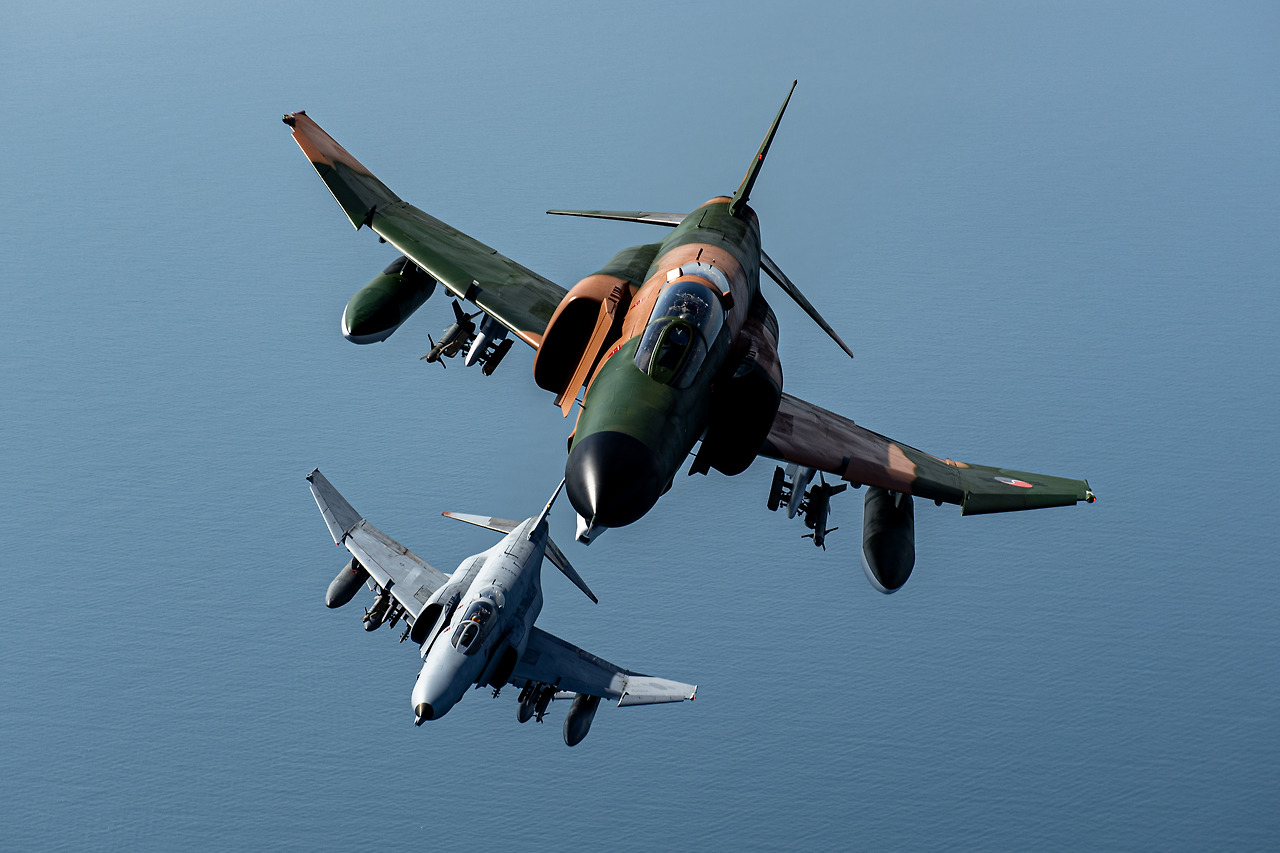
It was more than half a century ago that South Korea became the fourth country to acquire the Phantom (after the United States, United Kingdom, and Iran).
In total South Korea, operated 187 Phantoms, in three versions.
The ROKAF initially received 18 of the F-4D version, paid for with $64 million in special military aid provided by the U.S. government. Training for aircrew and maintainers began at Davis-Monthan Air Force Base, Arizona, in 1968. The first six of these F-4Ds arrived at Daegu Air Base on August 29 the following year, after a ferry flight across the Pacific that had taken them around 7,500 miles from McClellan Air Force Base, California, via refueling stops in Hawaii, Guam, and Okinawa.
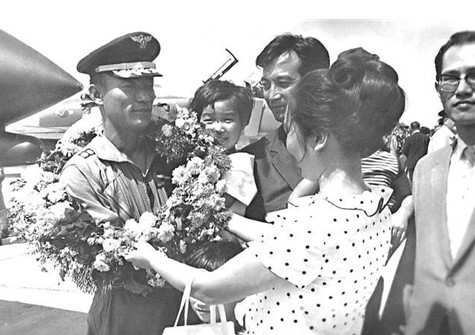
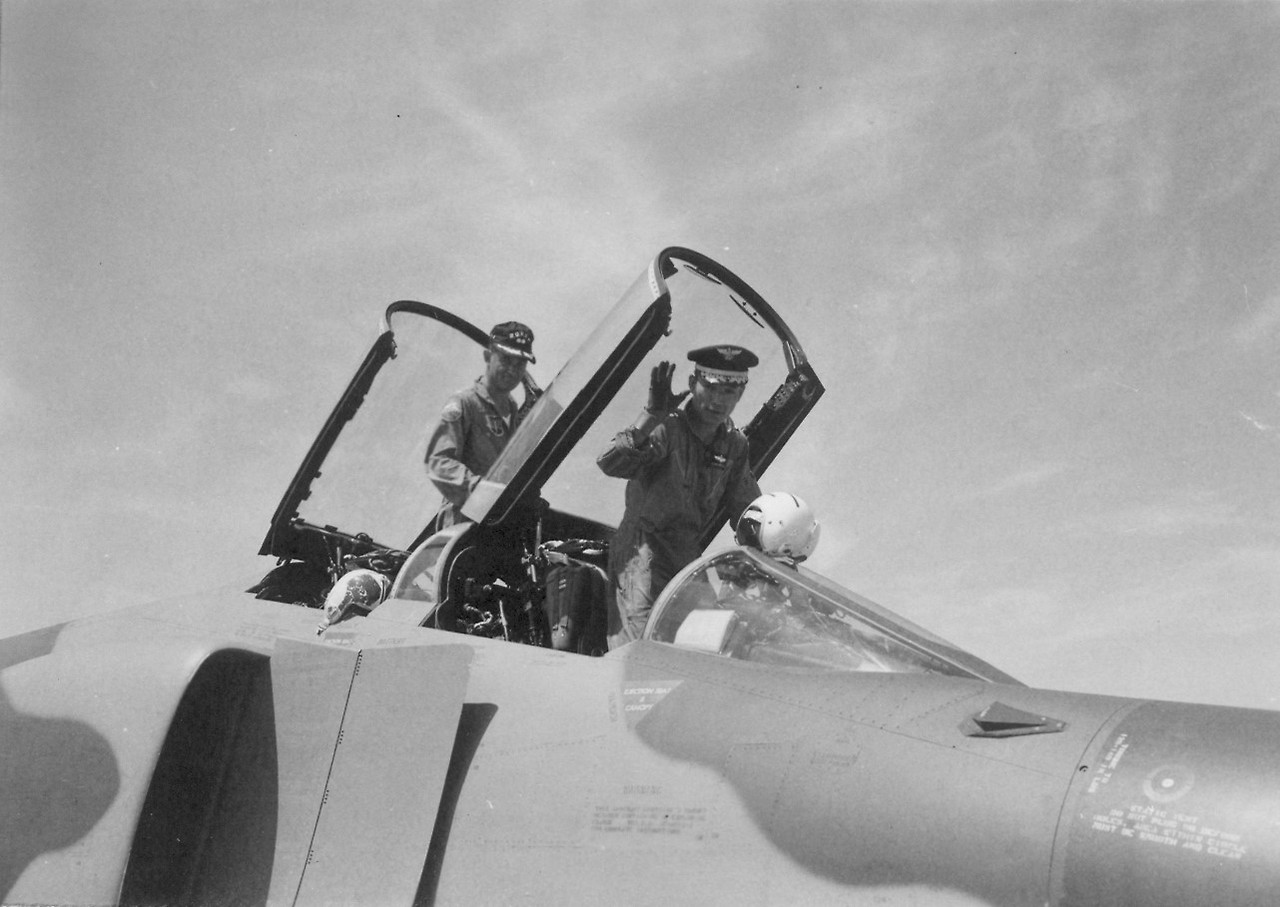
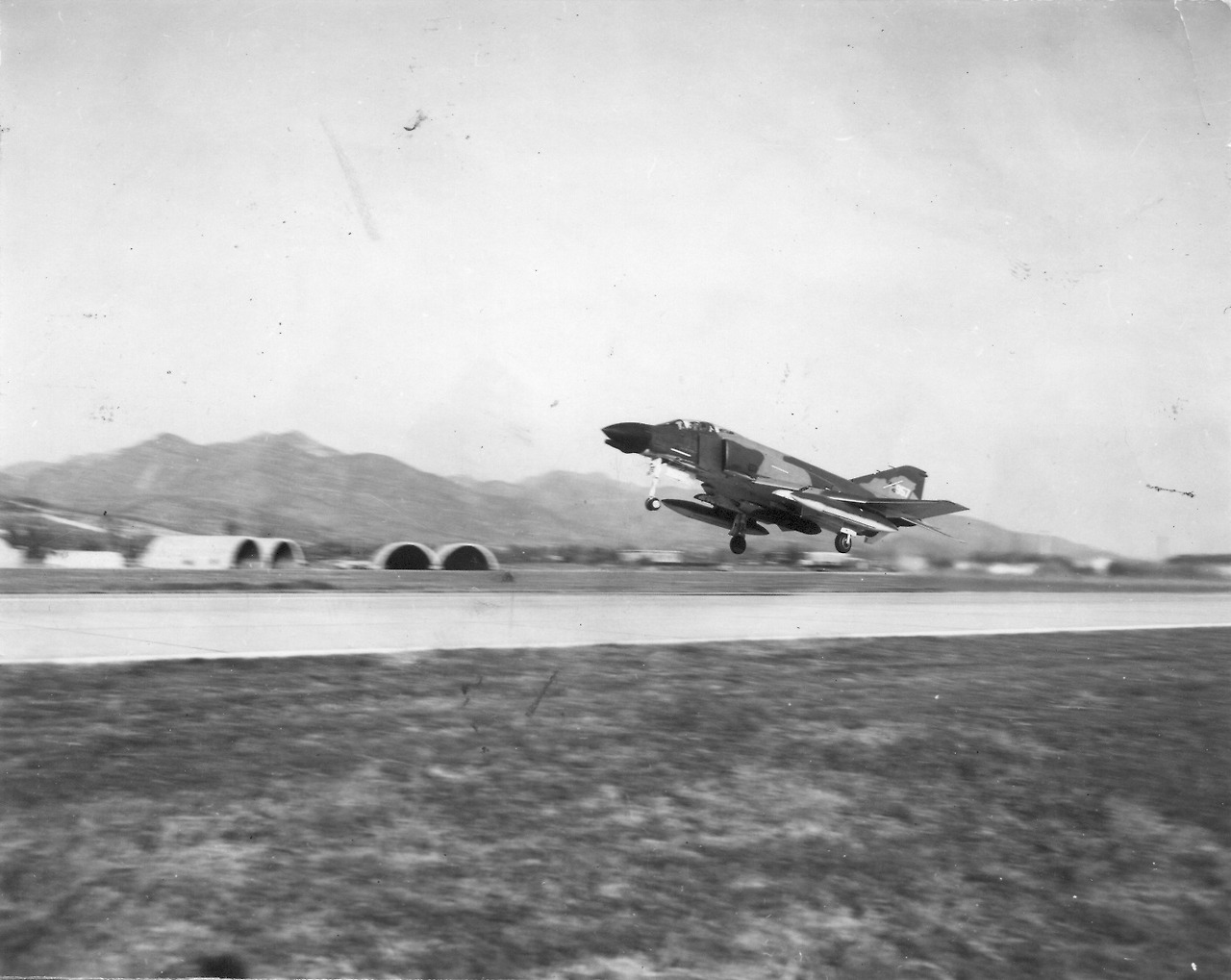
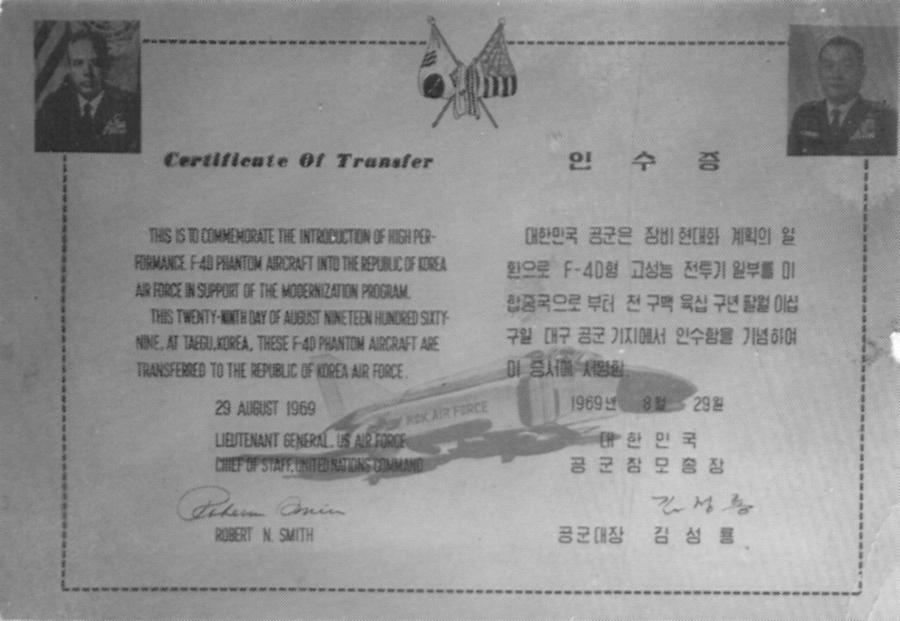
The first ROKAF Phantom squadron, the 151st Fighter Squadron, was formally established at Daegu on September 23, 1969. The 152nd, 153rd, and 159th Fighter Squadrons followed, making Daegu the Korean Phantom’s primary home base.
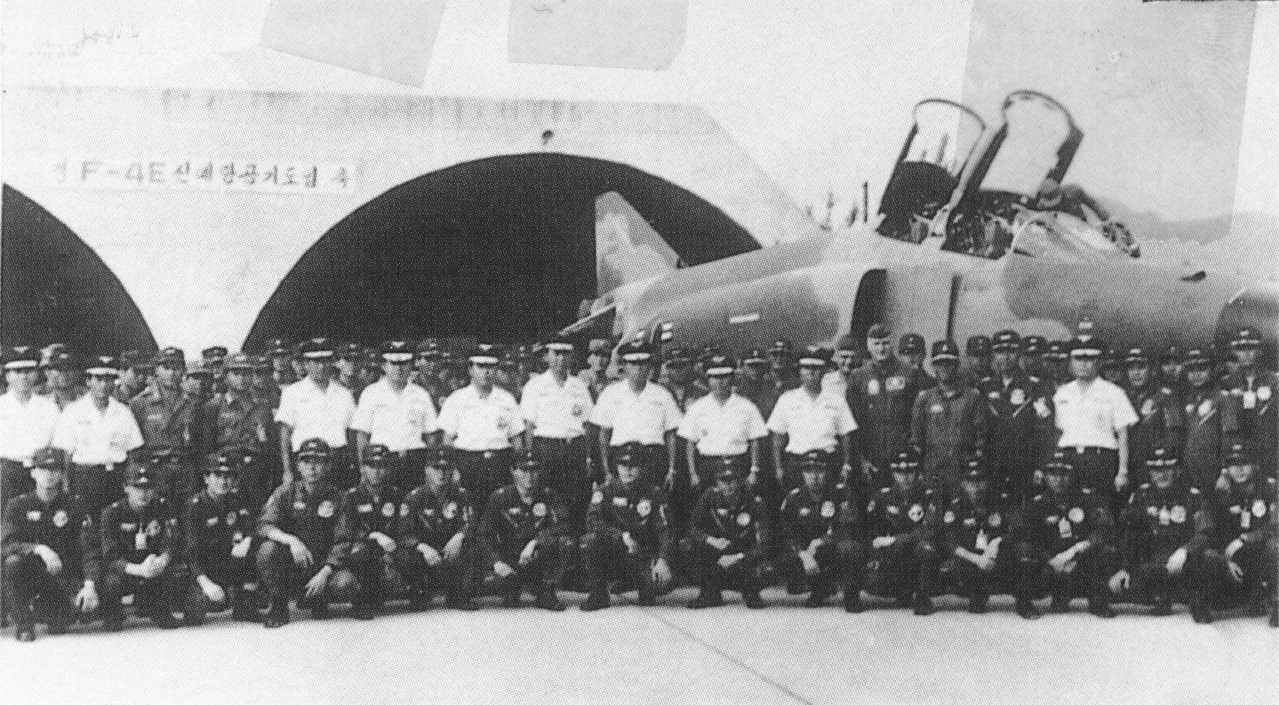
Among the pilots involved in bringing the first ROKAF Phantoms to Korea was retired Maj. Gen. Lee Jae-woo: “My heart still races when I think of the moment I flew the then state-of-the-art Phantom, received mid-air refueling, and landed at the Daegu base. Fifty-five years have passed since then, and witnessing the Phantom’s final flight is deeply moving. The Phantom enabled the Air Force to operate the F-16, F-15K, and F-35A, and it paved the way for the creation of the domestically developed KF-21.”
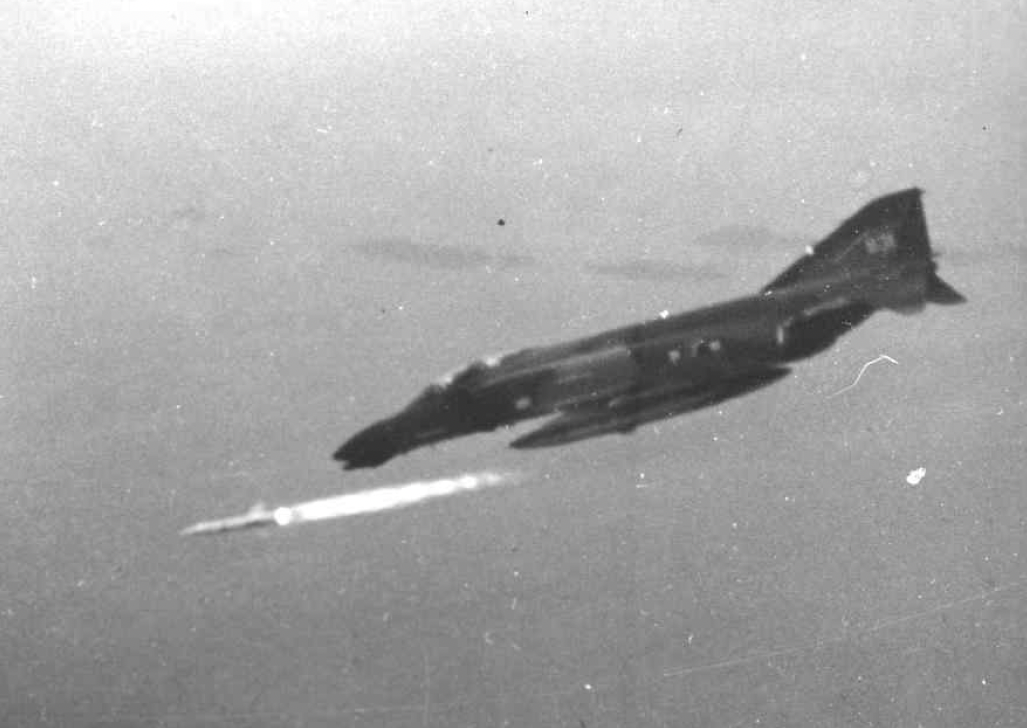
South Korea credits the Phantom with turning the tables on the Korean People’s Air Force (KPAF) in the North, which at the time was roughly twice the size of the ROKAF and operated the capable MiG-21; it wasn’t long before the Phantom was also involved in skirmishes with North Korea.
On June 1, 1971, a North Korean spy ship appeared off the coast of Soeguksan Island, and the ROKAF and the Republic of Korea Navy conducted a joint counter-espionage operation. The North Korean vessel put up anti-aircraft fire, before being destroyed by F-4Ds.
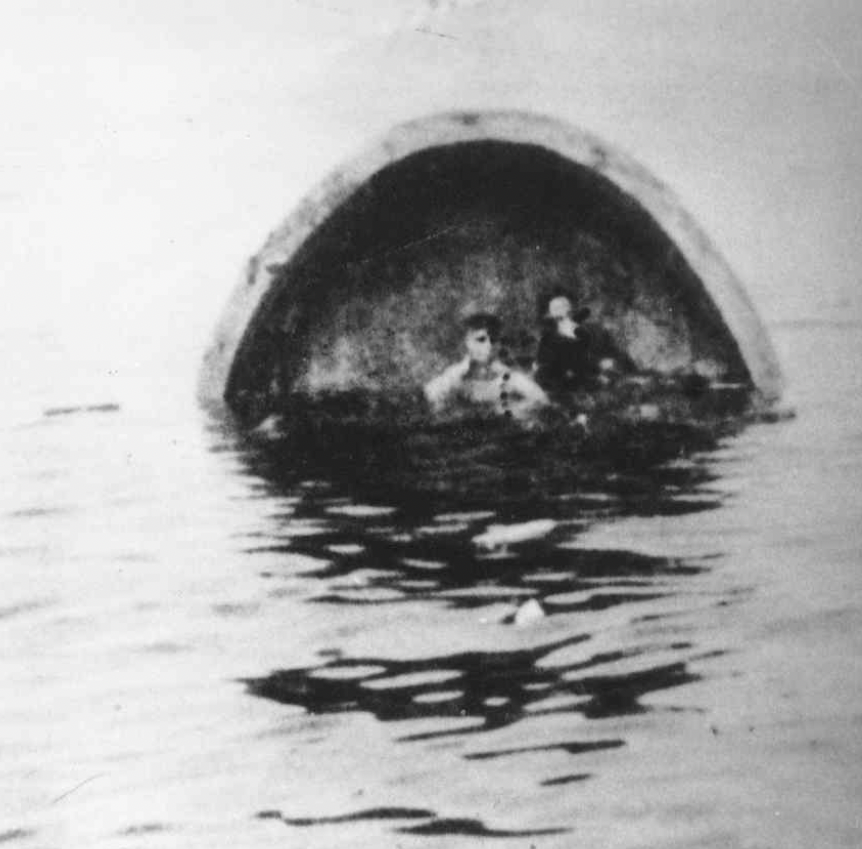
In 1972, South Korea acquired another 18 F-4Ds from the United States as a free loan, in a reciprocal arrangement that saw Seoul send 30 F-5A/Bs to South Vietnam. In May of the same year, the ROKAF took its Phantoms onto the road, with a highway exercise taking place on the ‘Seonghwan emergency runway,’ a specially adapted portion of the Gyeongbu Expressway on Korea’s west coast.

More Phantoms arrived in 1975, amid changes in the regional security situation, including the visit of North Korean leader Kim Il-sung to China and the communist takeover of Vietnam. Under the National Defense Fund, South Korean citizens funded the purchase of five more F-4Ds at a cost of around 7 billion won ($6.7 million). President Park Chung-hee inaugurated the resulting ‘Pilseung Squadron’ at Suwon Air Base on December 12, 1975.
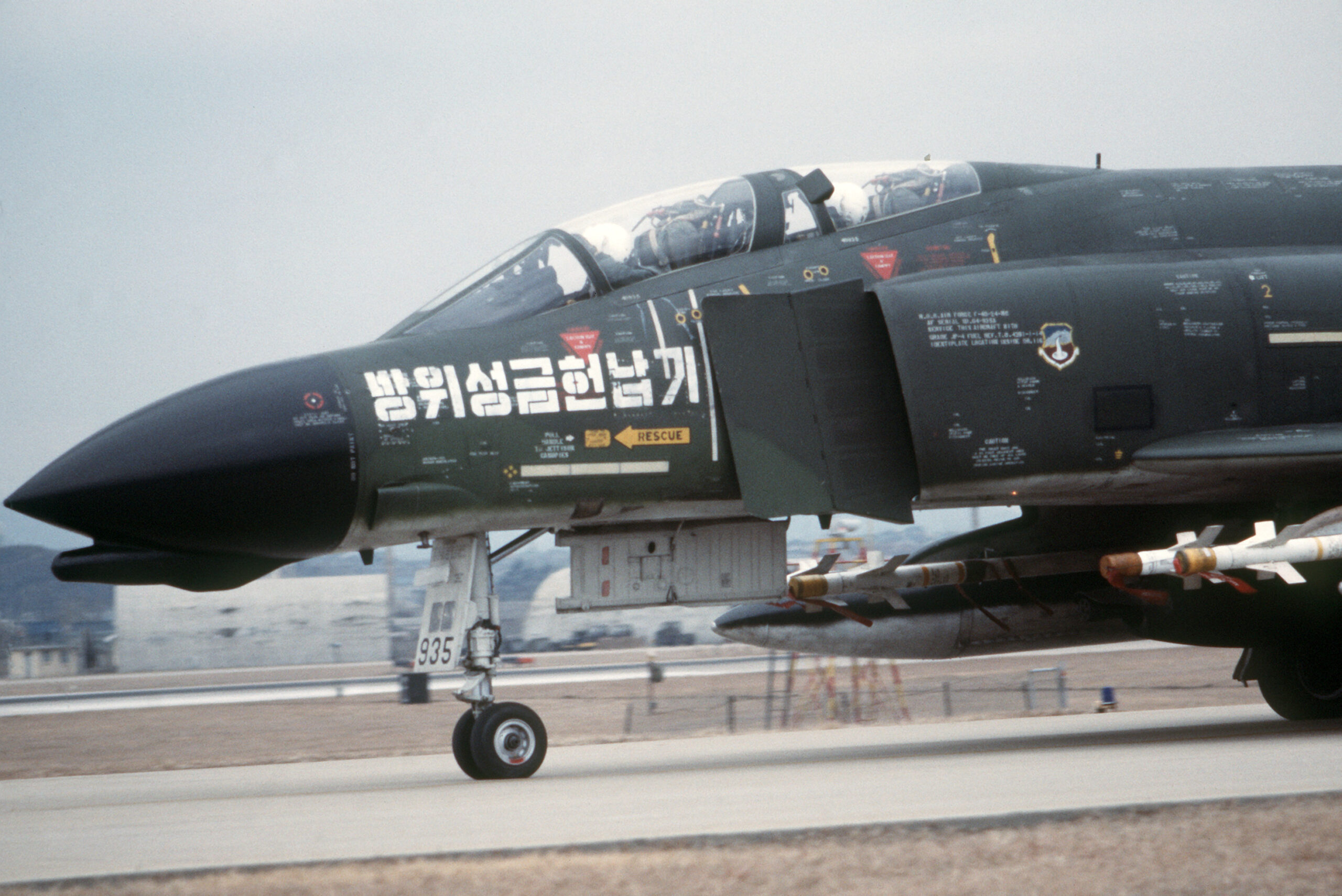
A major advance came with the introduction of the F-4E version on September 20, 1977, offering enhanced air-to-air and air-to-ground capabilities.
It was an F-4E that was at the center of another significant incident involving North Korea, on February 25, 1983. When KPAF Capt. Lee Ung Pyeong defected to the South in a MiG-19, a Phantom was scrambled and intercepted the North Korean pilot over Yeonpyeong Island, before guiding him safely to land at Suwon Air Base.
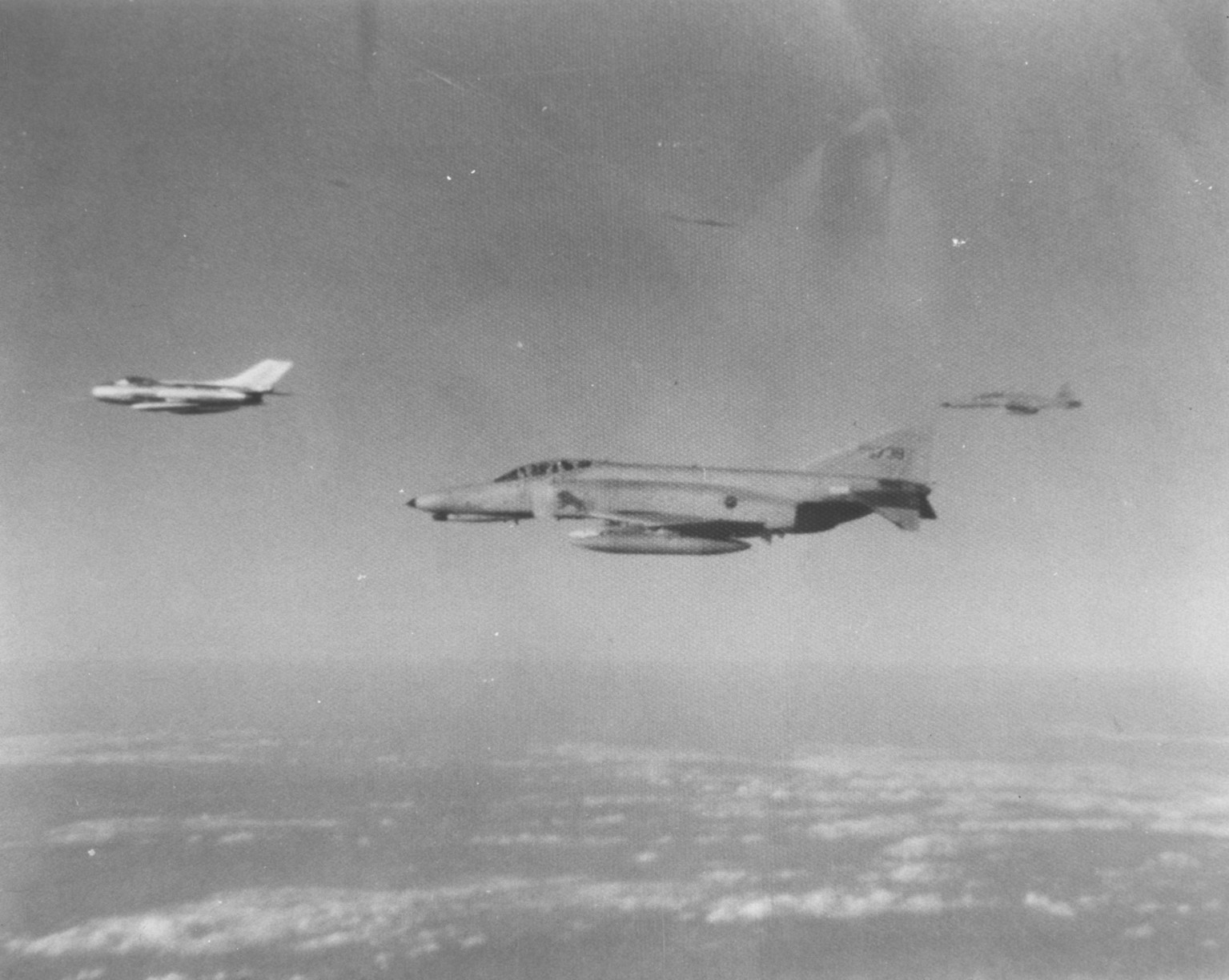
Other notable interceptions involved various Soviet military assets that were closely monitored by ROKAF Phantoms, including Tu-16s (in 1983), and Tu-95s plus nuclear submarines (in 1984). Russian ‘bogeys’ also followed, including on February 17, 1998, when F-4Ds were responsible for shadowing a Russian Il-20 Coot electronic intelligence aircraft over the Sea of Japan. Seoul accused the Russian aircraft of violating South Korean airspace.
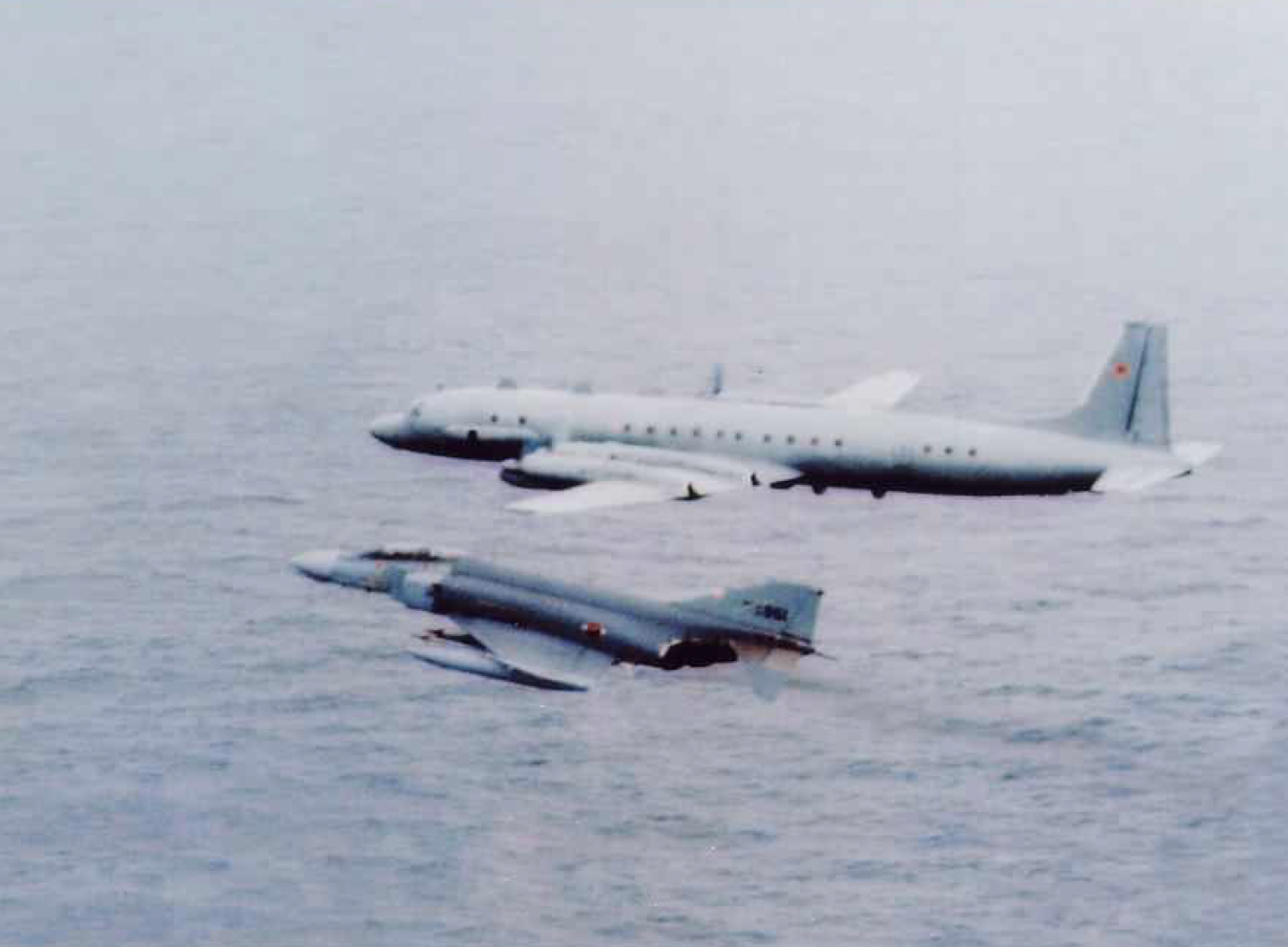
Modernization of the ROKAF saw the introduction of the F-16 in April 1986, followed by the F-15K in October 2005, and the F-35A in March 2019. In the process, South Korea disposed of its F-4Ds in 2010, while the RF-4C reconnaissance jet was retired in 2014.

With the withdrawal of the F-4E looming, the ROKAF organized various retirement events to mark the end of its service.
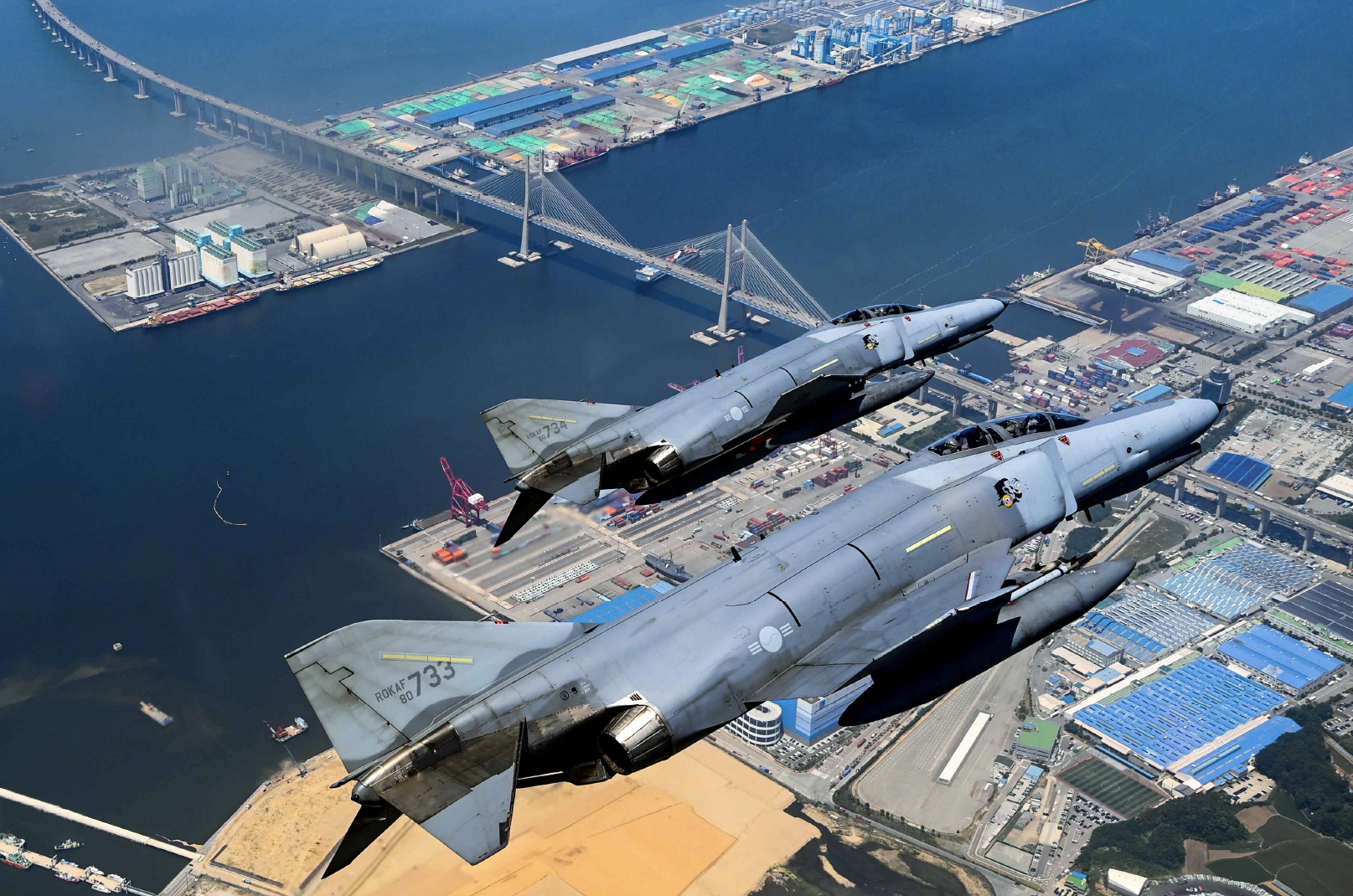
On March 8, 2024, all of the ROKAF’s in-service fighter types gathered at Suwon Air Base for an ‘Elephant Walk.’ Eight F-4Es led the way, followed by a total of 33 other fighters, including examples of the F-15K, F-16, FA-50, F-5E/F, and F-35A. The F-4Es were armed with the AGM-142 Popeye and AGM-65D Maverick air-to-ground missiles as well as 500-pound Mk 82 freefall bombs.
“I am very proud to be flying the Phantom for the last time in my career,” explained Maj. Do-Hyung Kim, of the 153rd Fighter Squadron, 10th Fighter Wing, during the Elephant Walk event. “I am doing my best to make each sortie historic. I will soon switch to another aircraft, but I will firmly defend the Republic of Korea with the pride of being a Phantom pilot.”
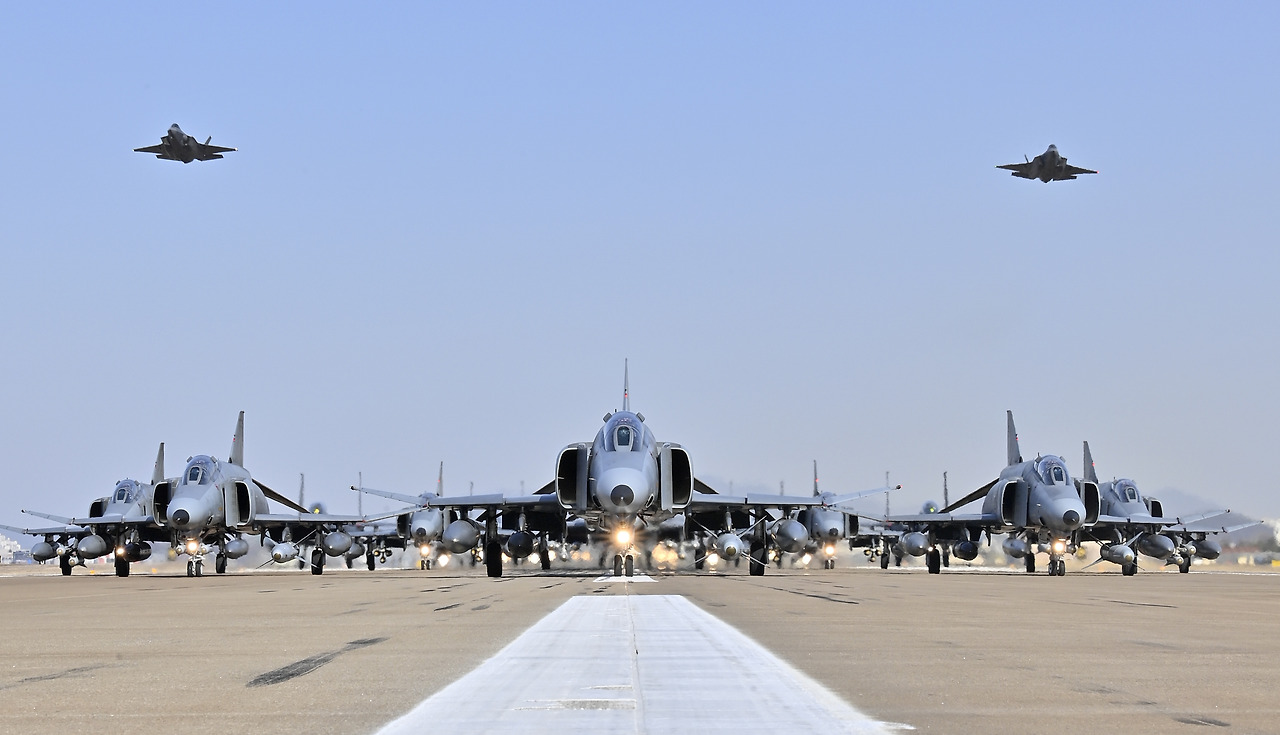
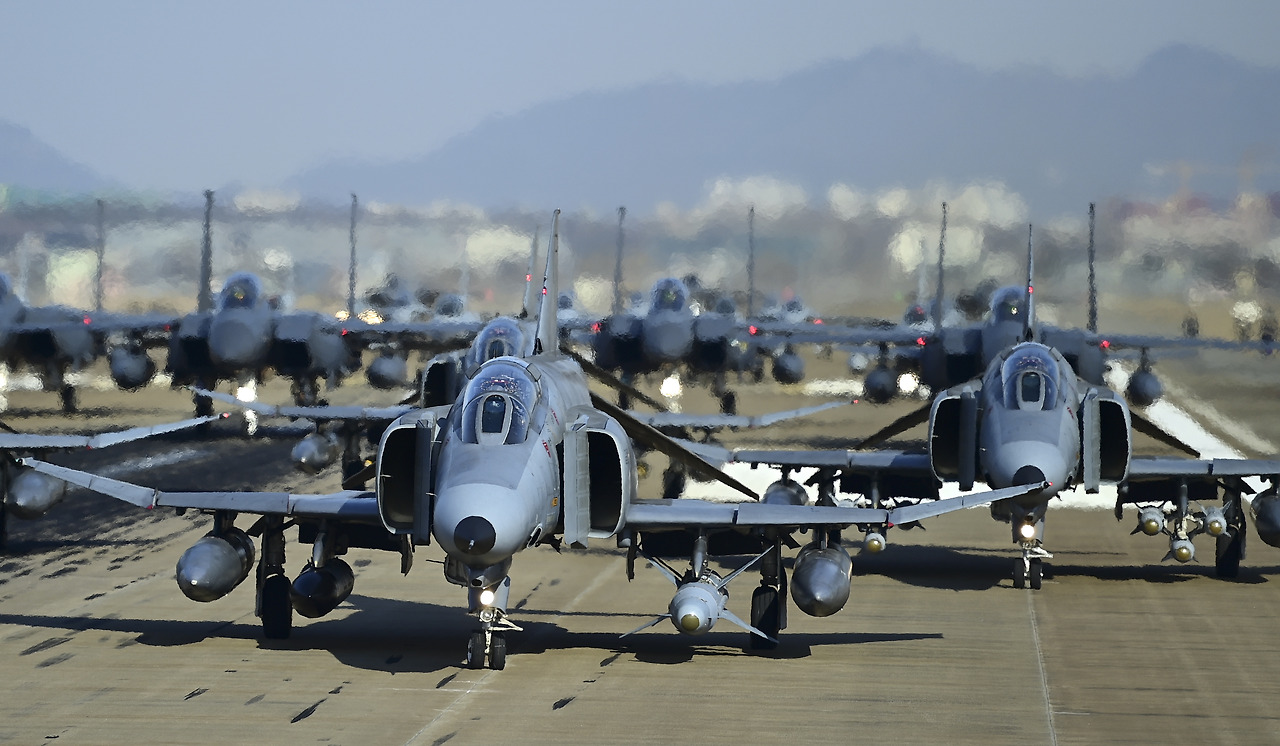
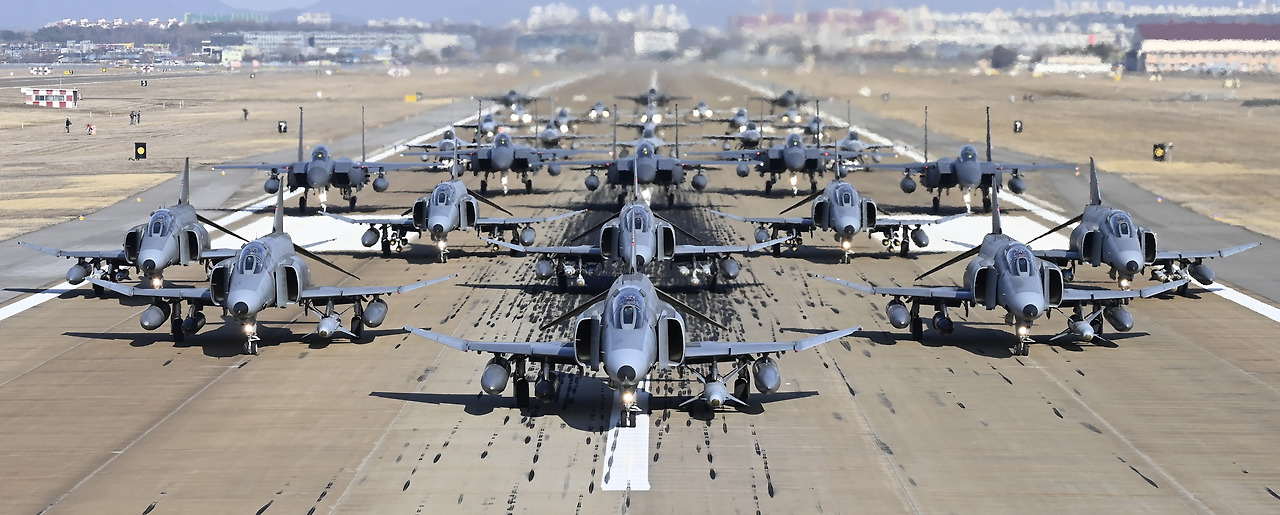
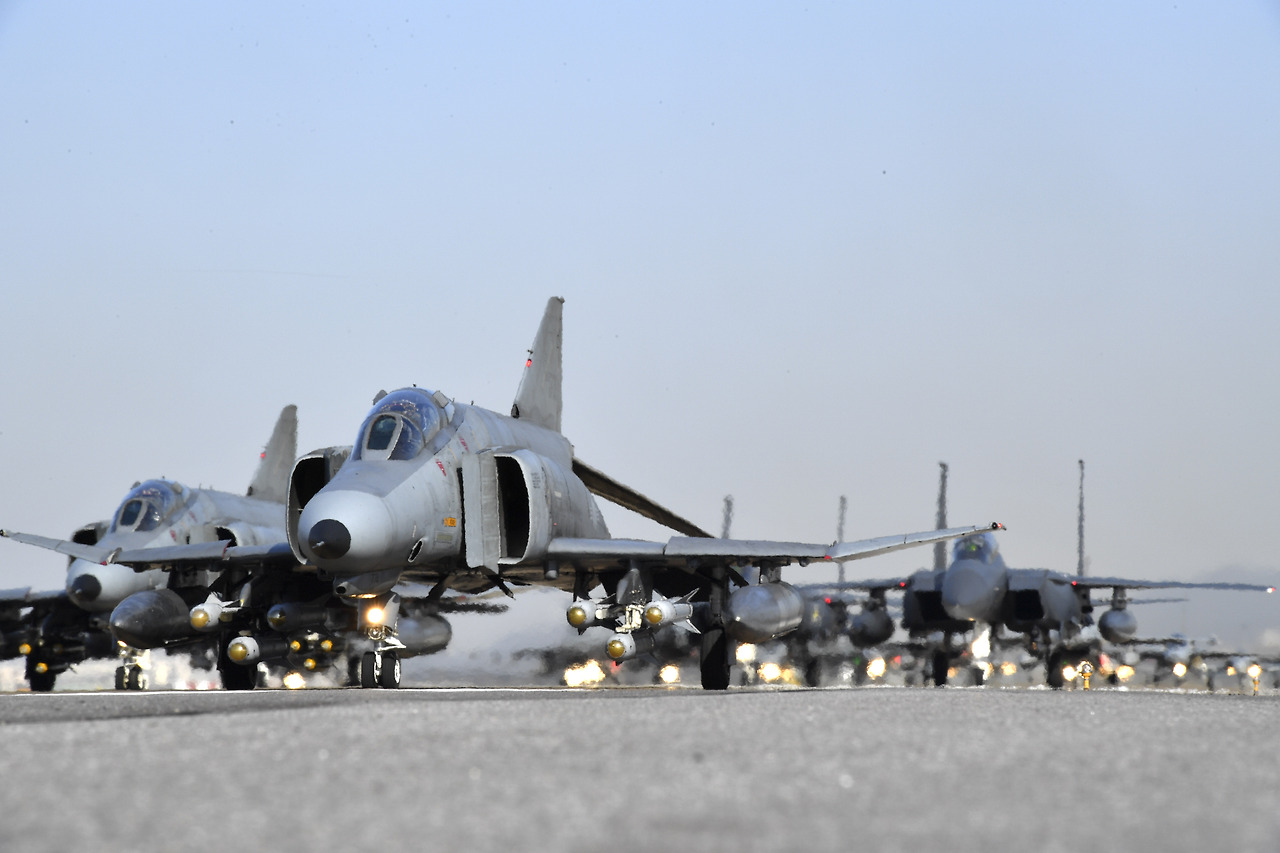
The final months of Phantom operations in Korea also put the spotlight on the Israeli-made AGM-142 Popeye air-to-ground missile, a missile that has been retired by the ROKAF alongside the F-4.
According to the ROKAF, the Popeye, first introduced in 2002, was able to hit targets at around 62 miles with a circular error probable (CEP) of around three feet and could penetrate more than five feet of reinforced concrete. The AGM-142 is man-in-the-loop control, meaning it is flown to its target via two-way datalink, usually via the launching aircraft.
As TWZ reported at the time, the Phantom’s final live-fire exercise took place on April 18 and saw AGM-142 Popeyes being fired, as well as the delivery of Mk 82 unguided bombs, with three F-4Es dropping 10 of the bombs each.
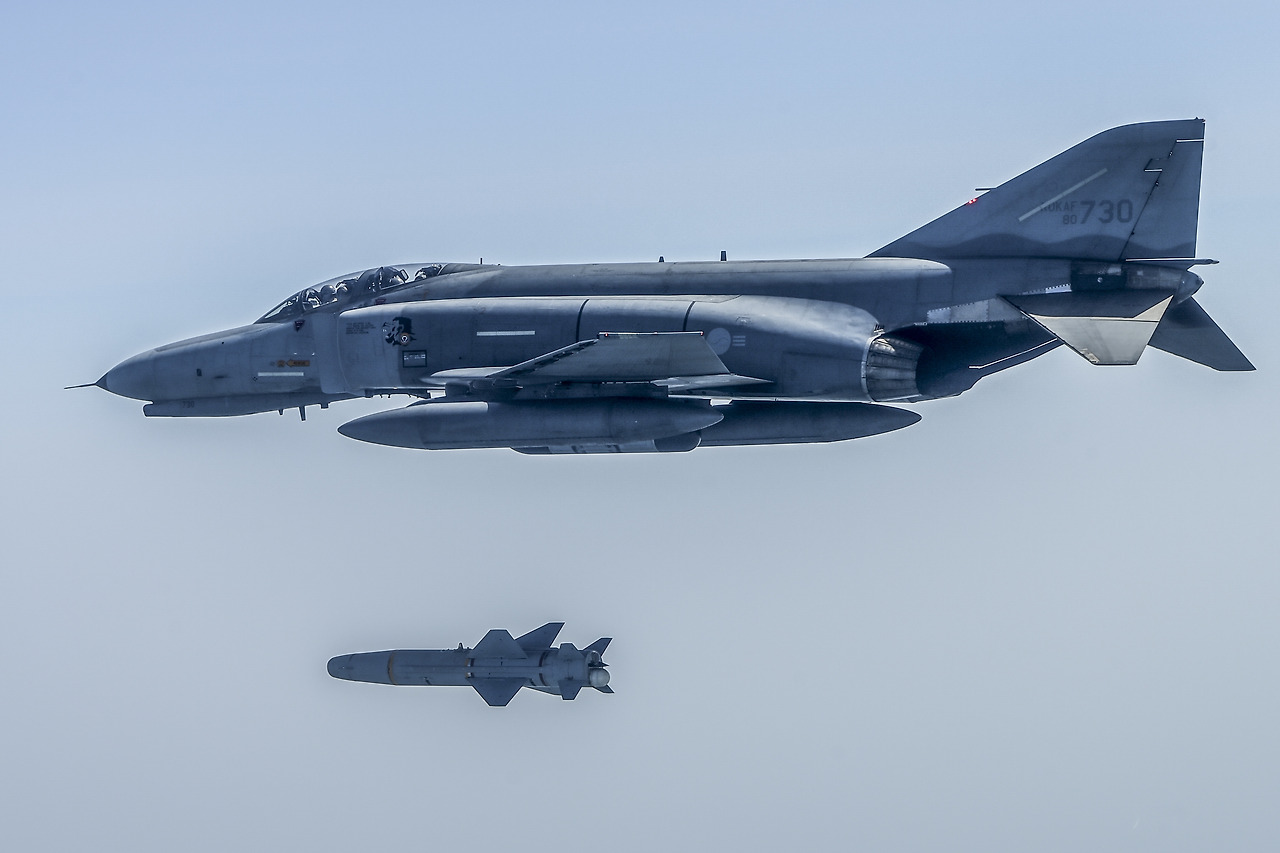
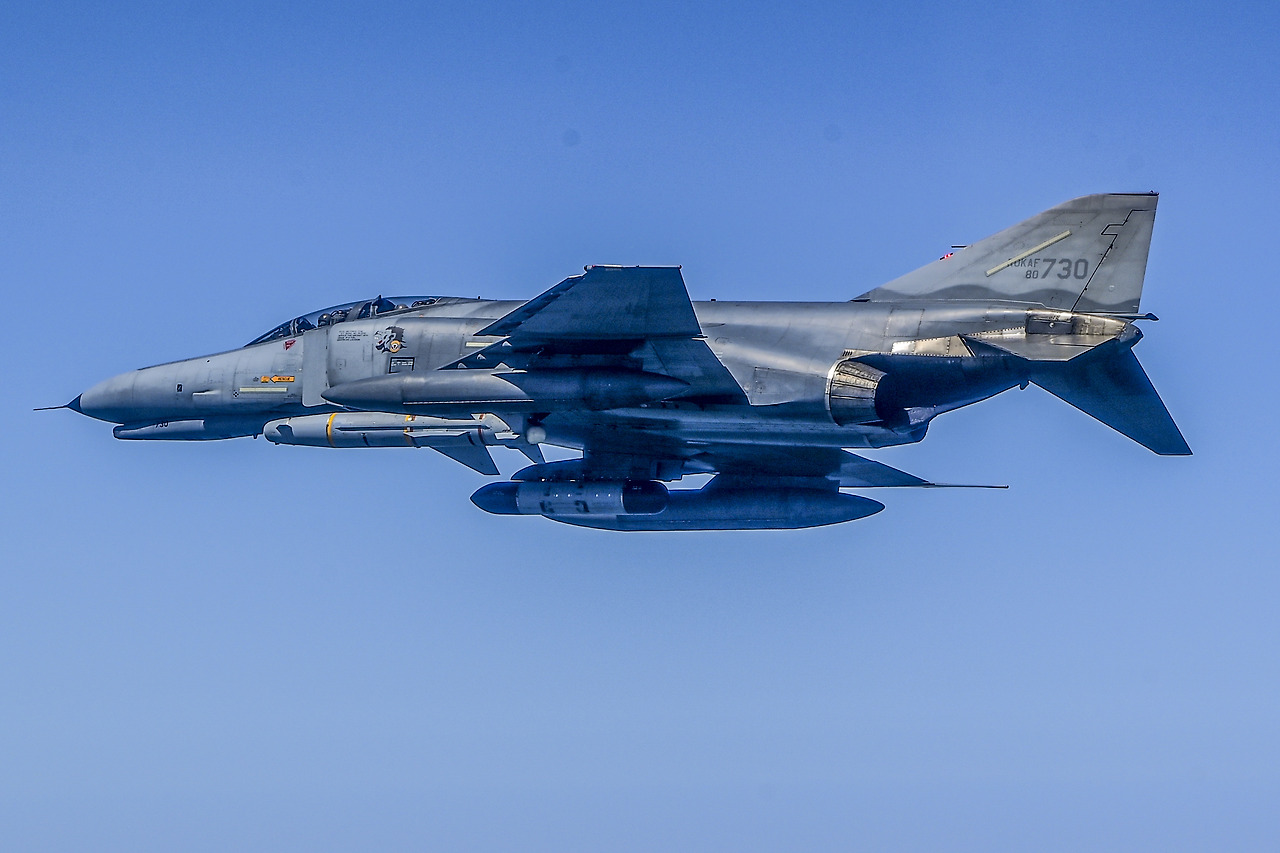
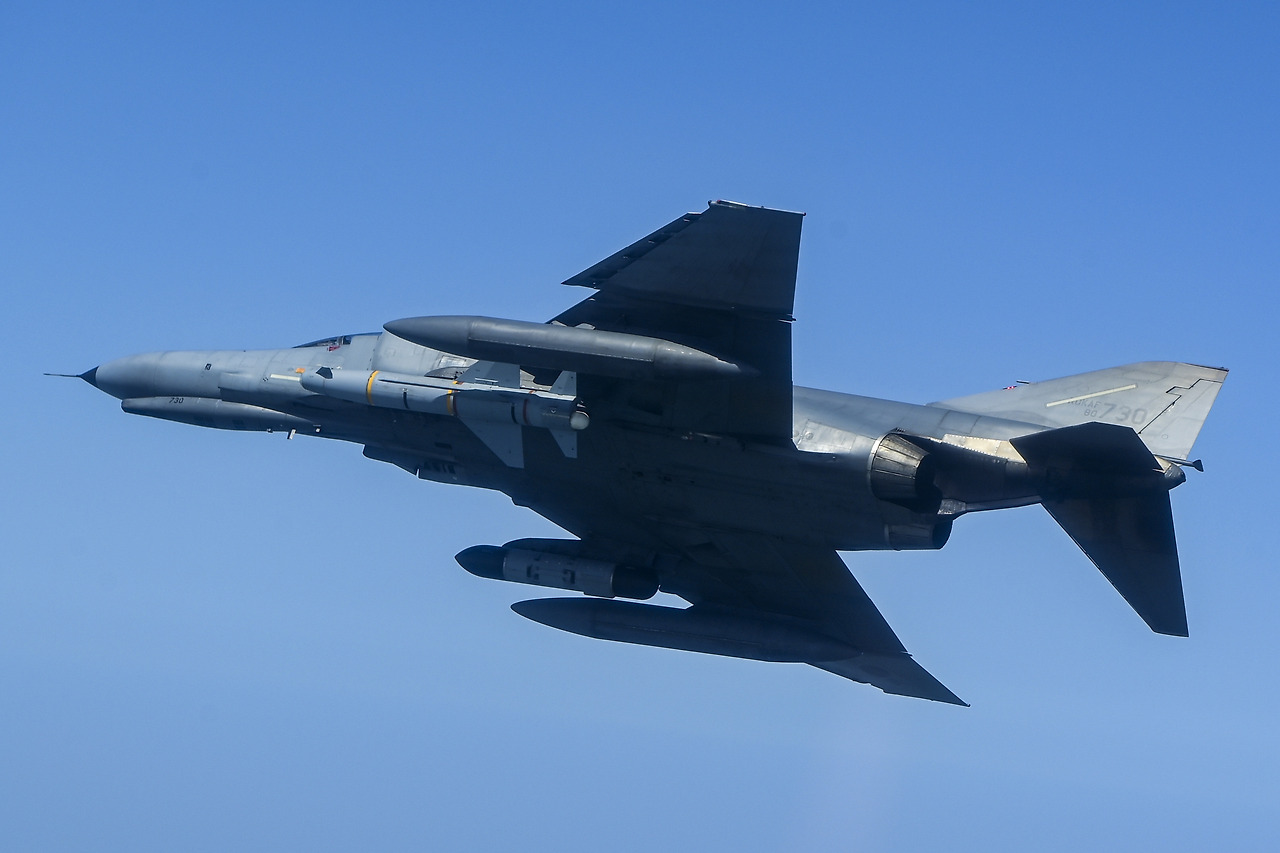
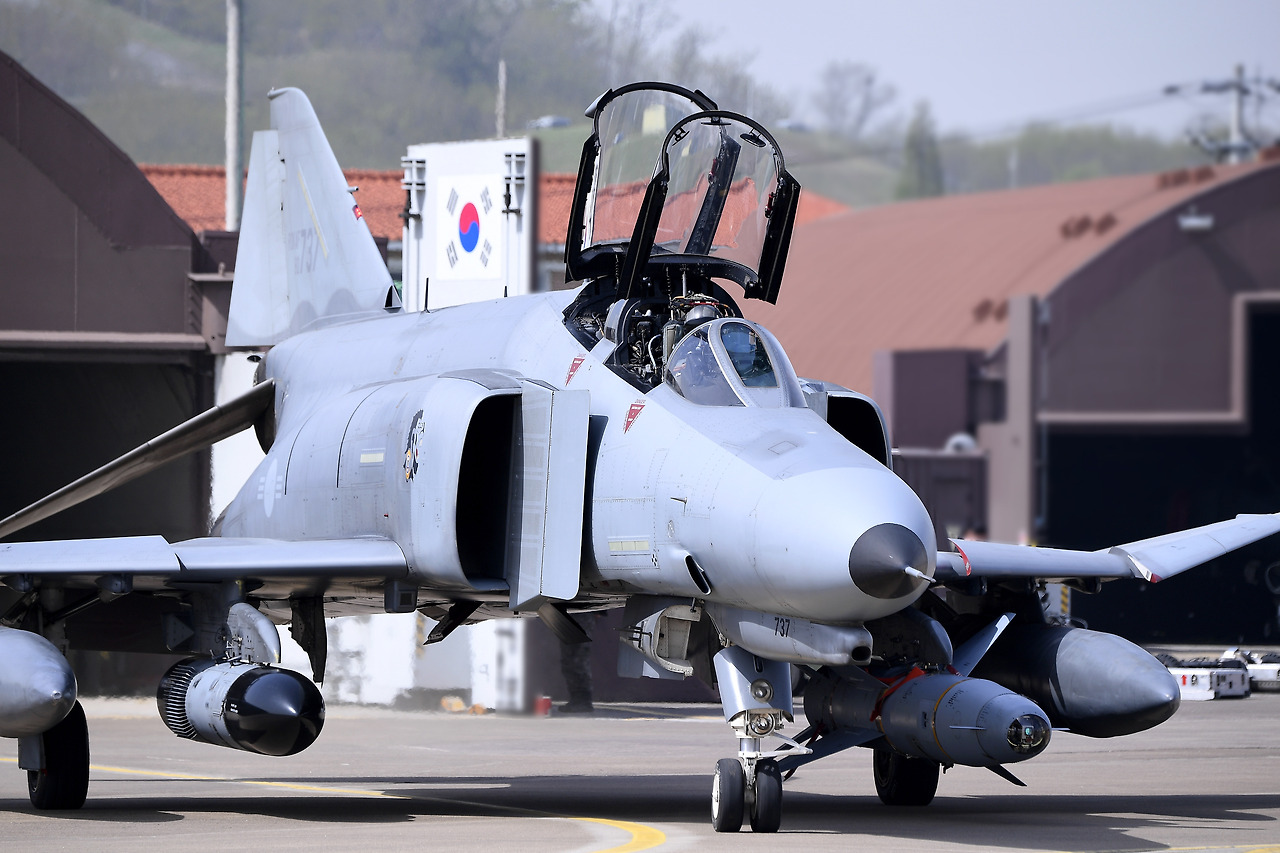
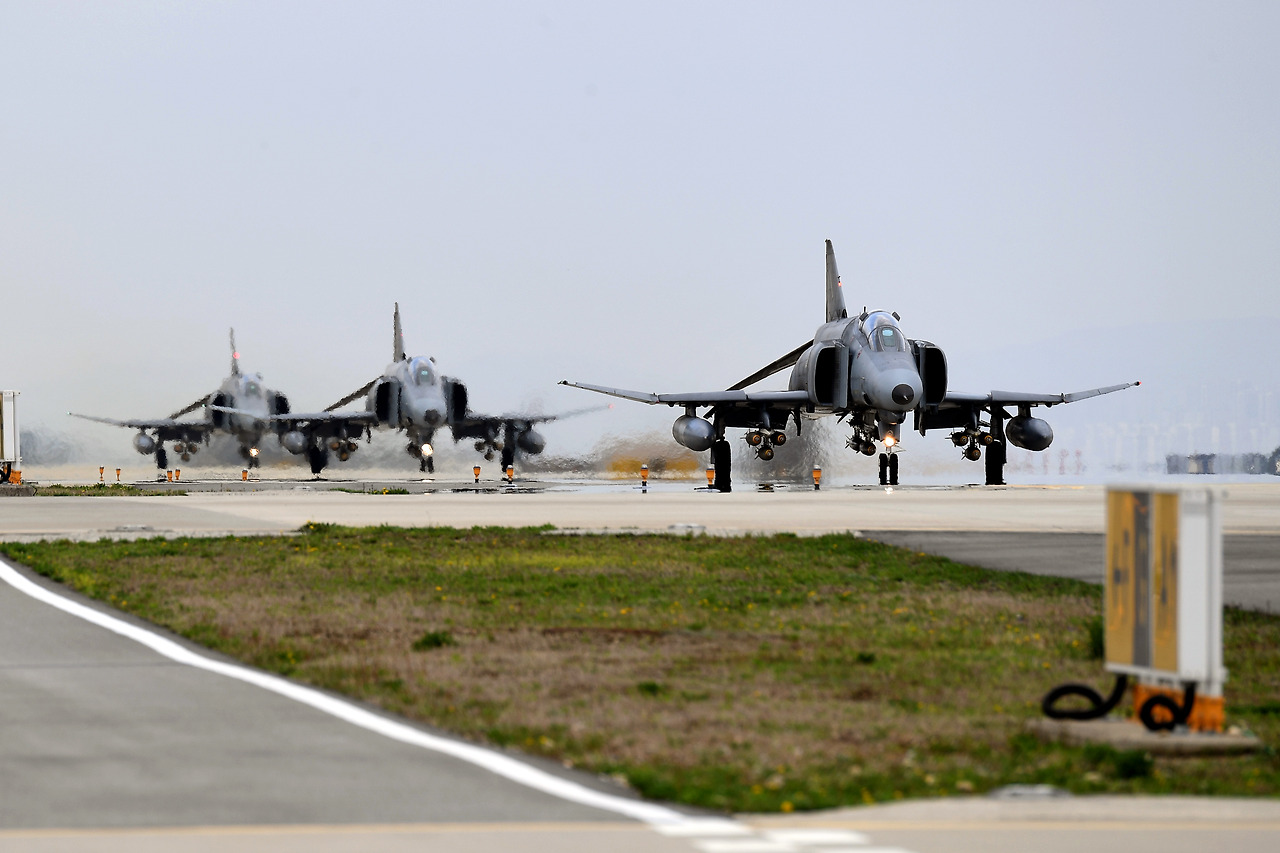
“The live-fire exercise gave me the confidence to strike any target immediately and powerfully,” said Maj. Kim Do-hyung, of the 153rd Fighter Squadron, 10th Fighter Wing. “It is a special feeling to be the last live-fire operator of the Popeye, which was once our most powerful strategic weapon.”


On May 9, four F-4Es paid tribute to the famous ‘Pilseung Squadron,’ making a flight across notable locations in South Korea, including the air bases at Suwon, Cheongju, Chungju, and Daegu. The flight over Sacheon was accompanied by two KF-21s, representing the future of the ROKAF’s fighter force, while one of the F-4Es by now had its original jungle camouflage reinstated. Two more of the jets had the Phantom’s iconic ‘Spook’ painted on their fuselage sides with the commemorative inscription “From the hands of the people, by the heart of the people.”
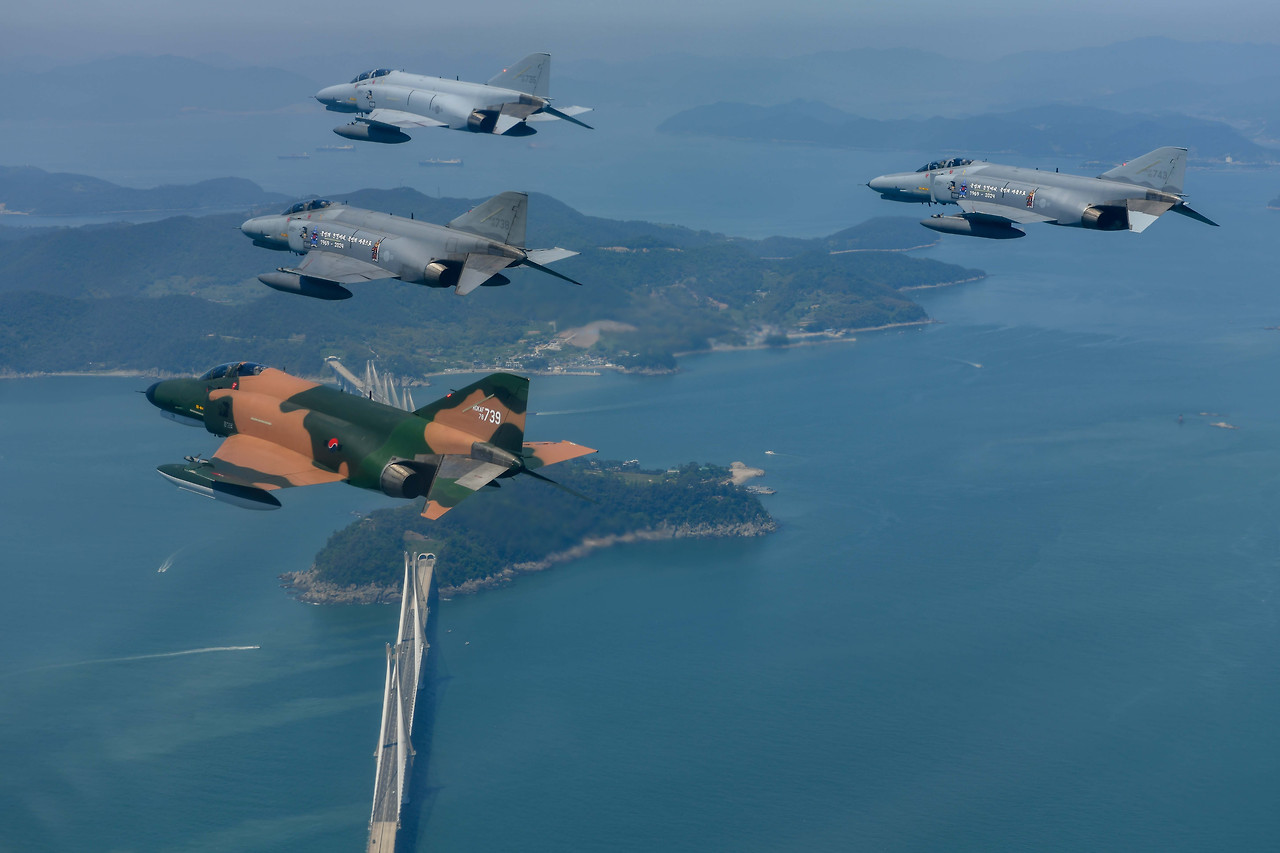
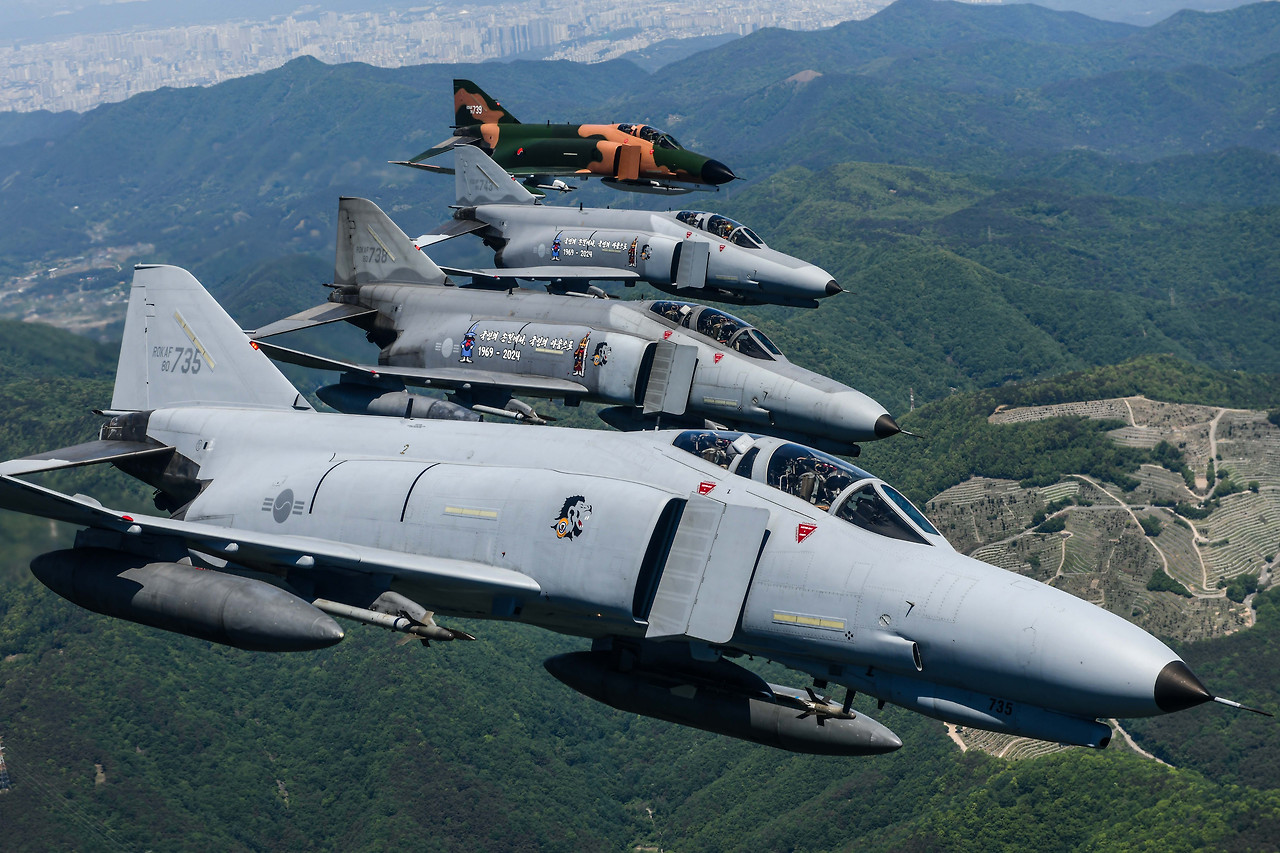
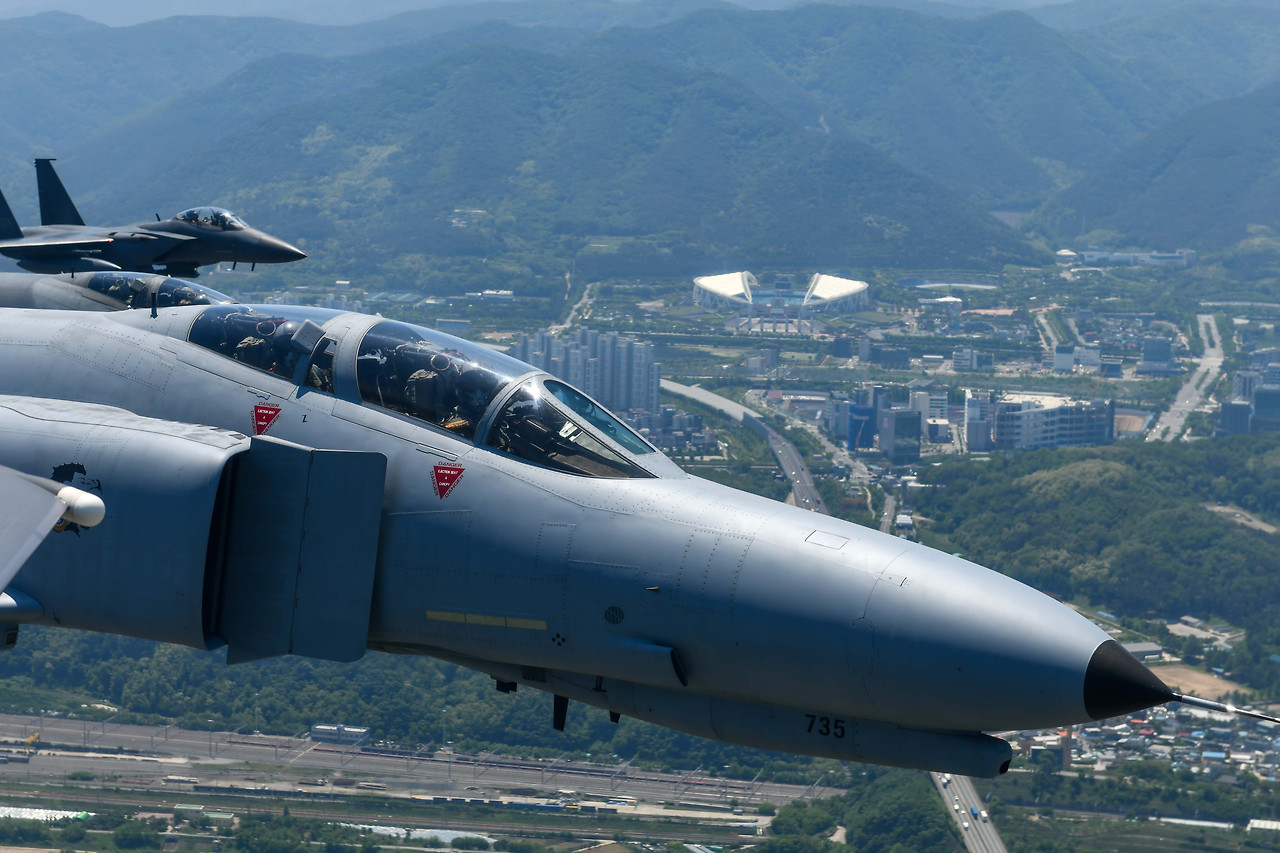
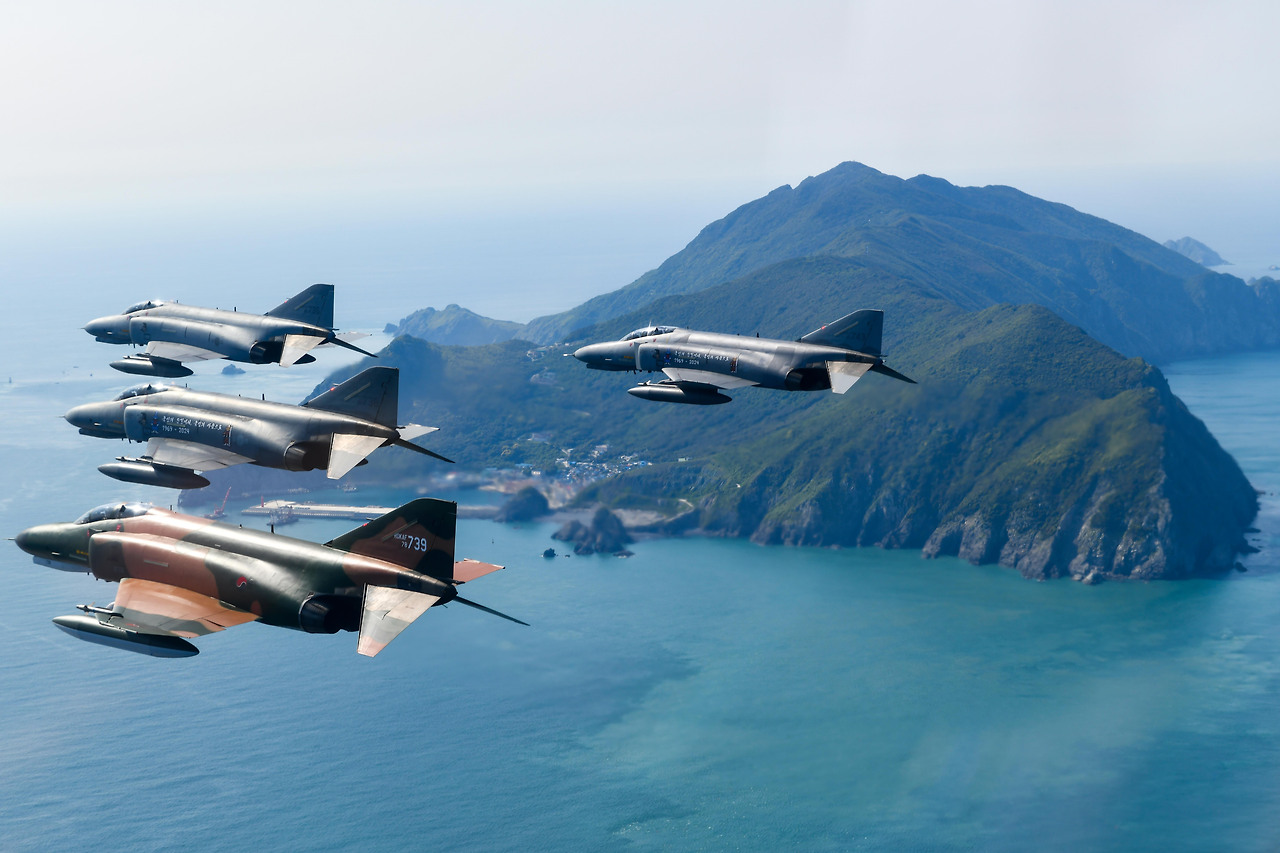
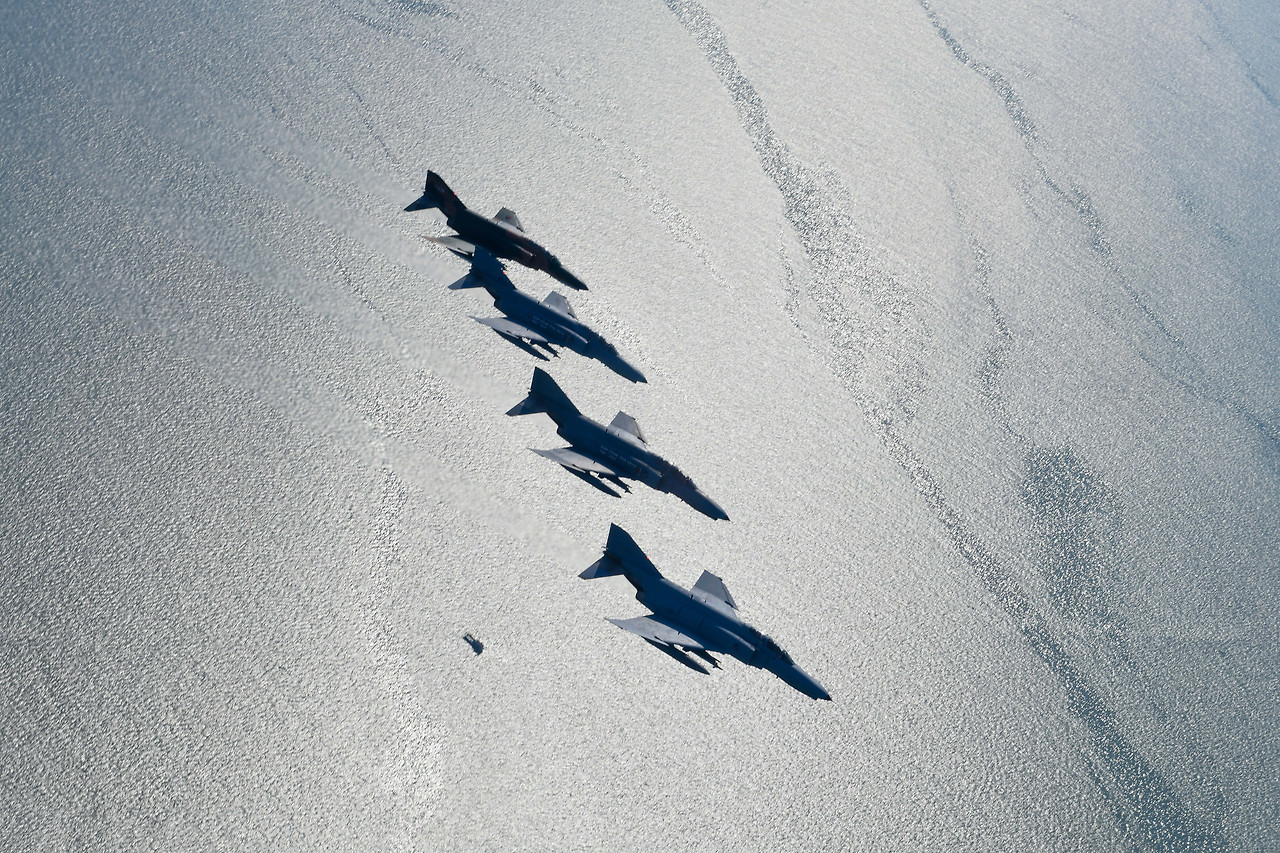
In Korean service, the F-4 was nicknamed Dokkaebi, after a kind of goblin from Korean mythology and folklore. However, the Spook motif was also widely used. To mark the retirement, new versions of the Spook were created, one of them wearing a traditional Korean red scarf and a flag, and another with the helmet of a Joseon Dynasty warrior, holding an AGM-142 Popeye missile.
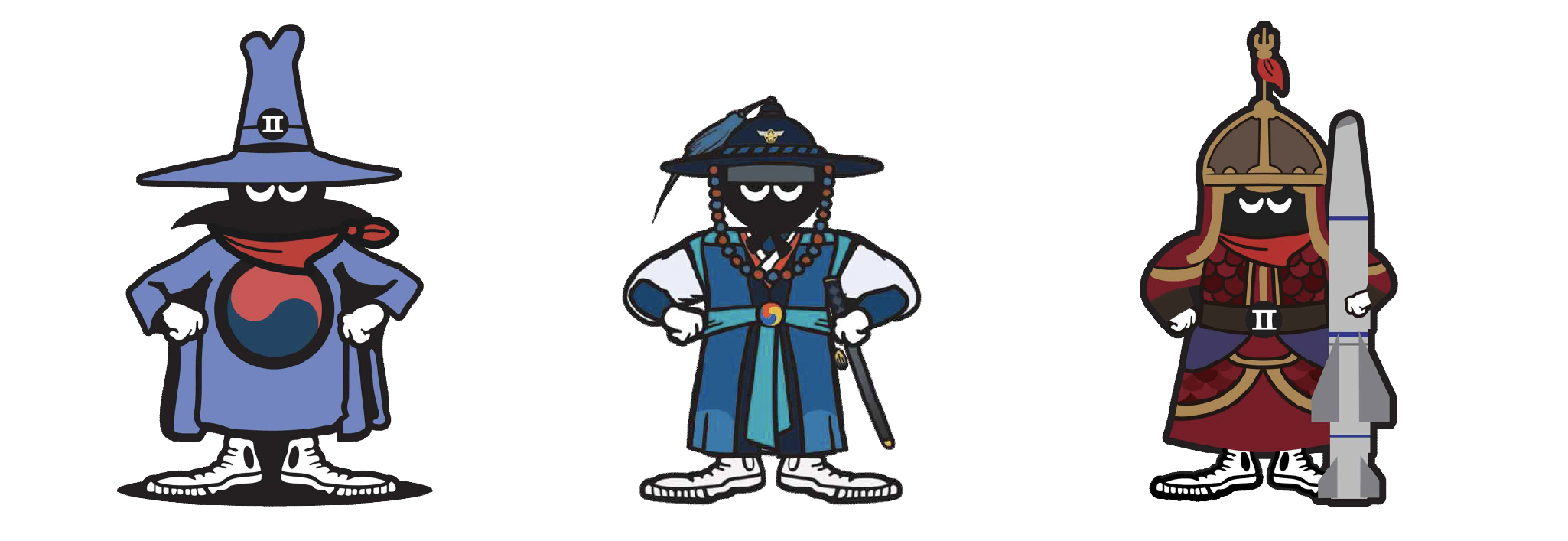
On June 5, ROKAF Chief of Staff Lee Young-su visited Suwon Air Base and flew in an F-4E during one of the very last sorties before its retirement, as part of a readiness inspection of key fighter squadrons. The camouflaged F-4E that Lee flew was serving as a Red Air asset to test the responses of other fighter units. While reflecting on the upcoming end of Phantom operations, Lee also drew attention to the current tensions with the North:
“The level and frequency of enemy provocations, including ballistic missile launches, GPS jamming, and dirty balloons, have increased in recent years,” Lee said after his flight, “and we must be ready and able to respond immediately, forcefully, and to the end, to any provocation. The F-4E Phantom that served as a virtual representative today will be retired in two days, but our airmen will forever carry the security will and wishes of the people that were embodied in the Phantom.”
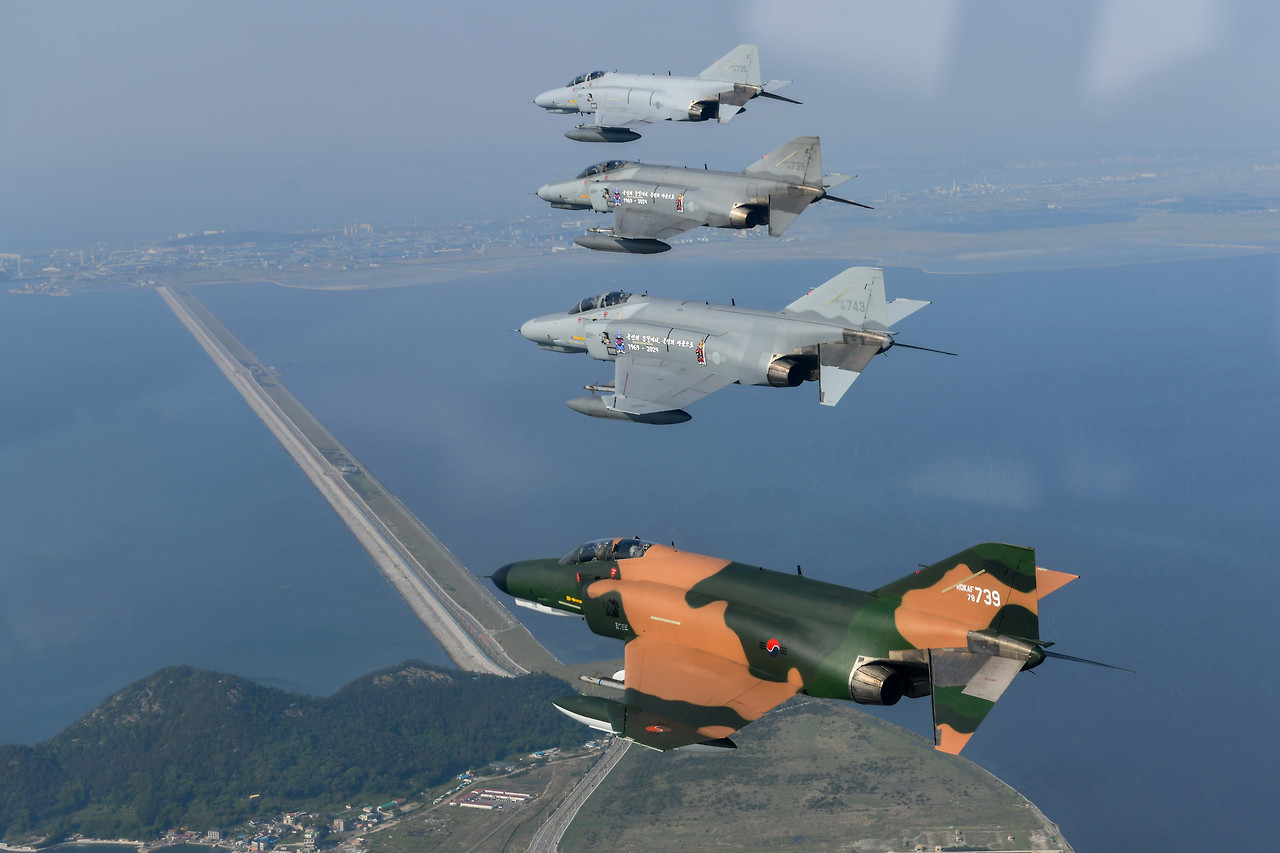
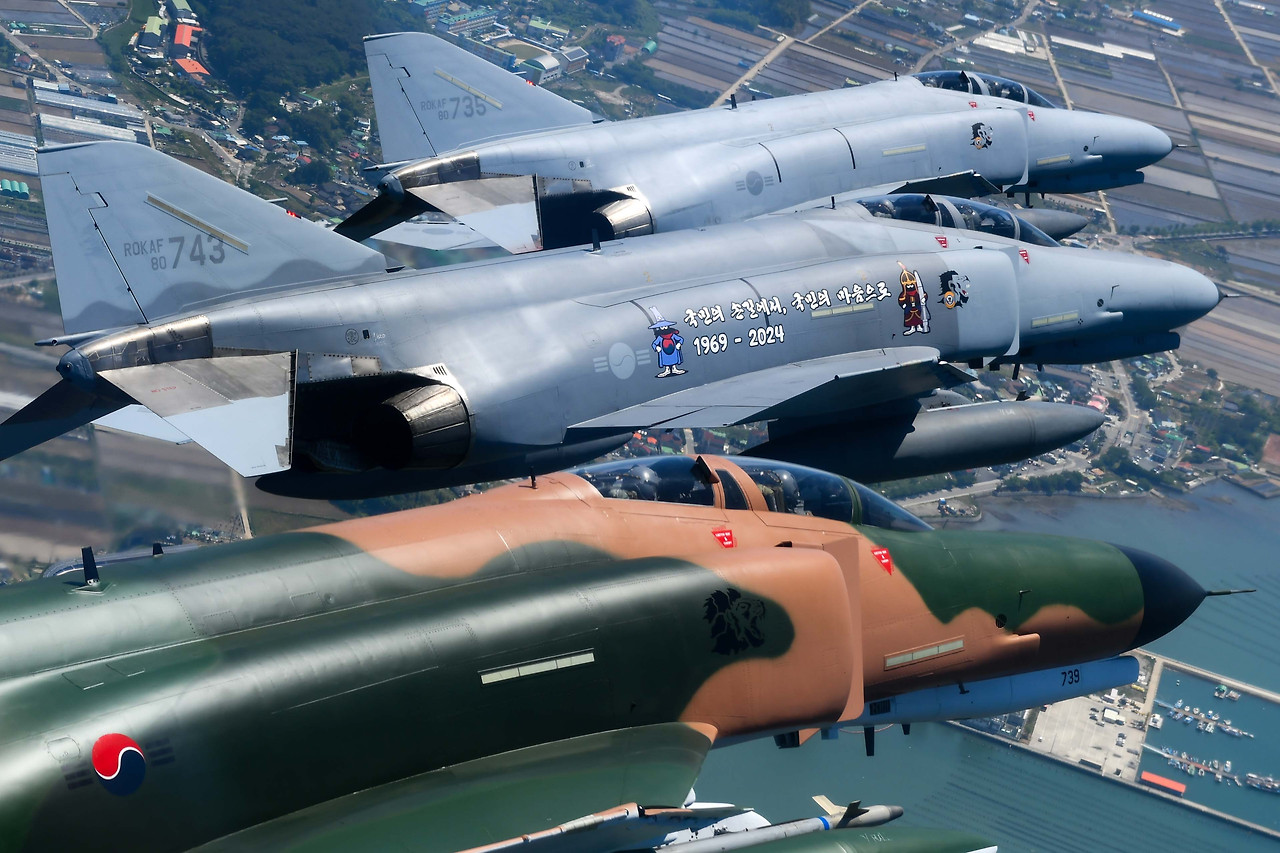
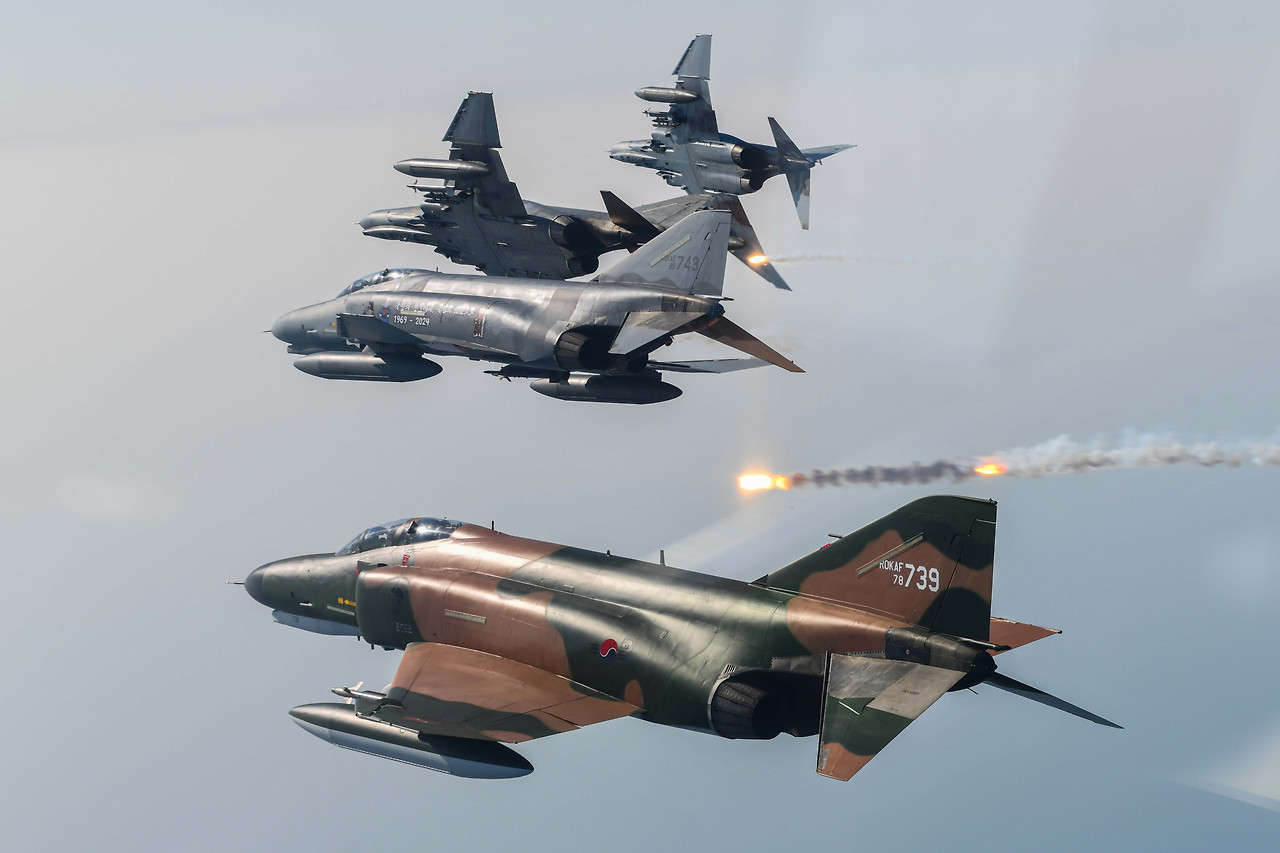
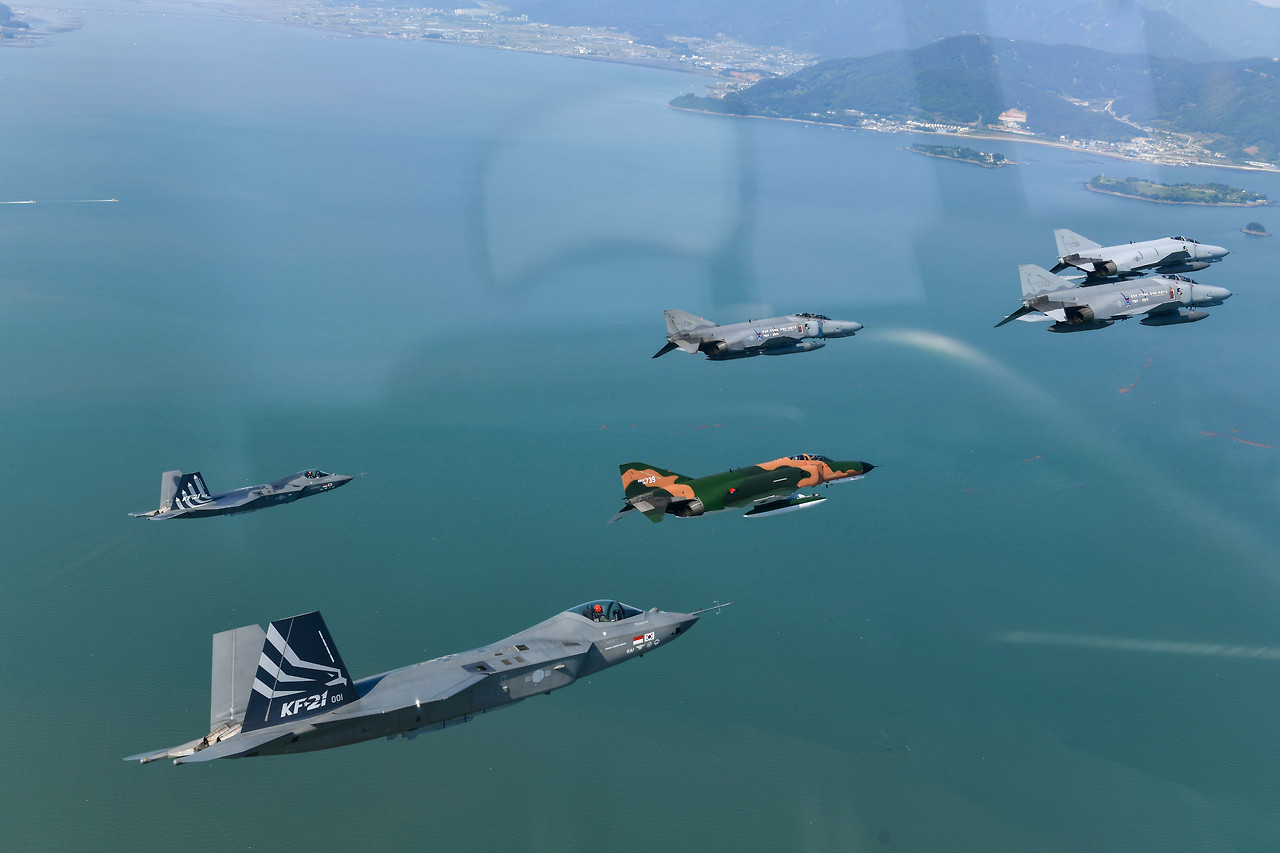
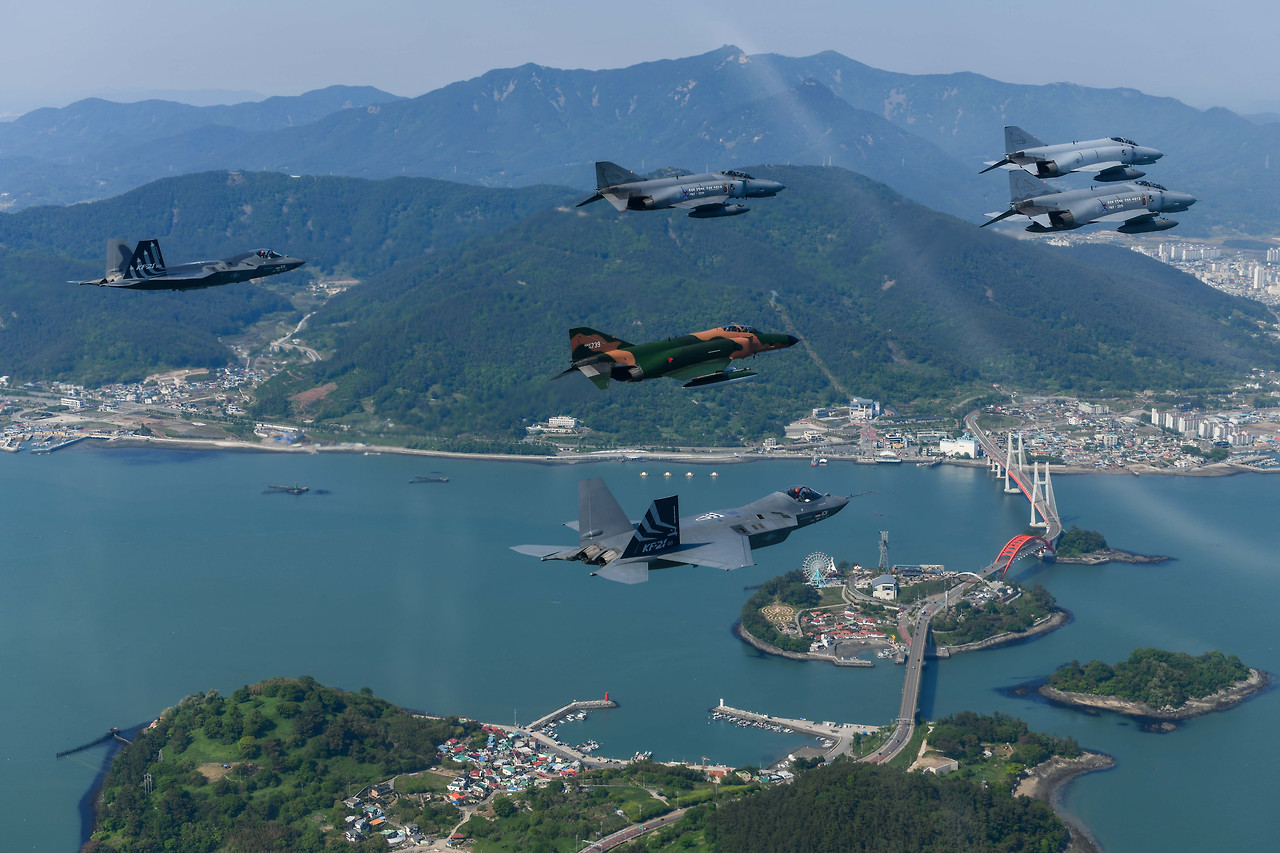

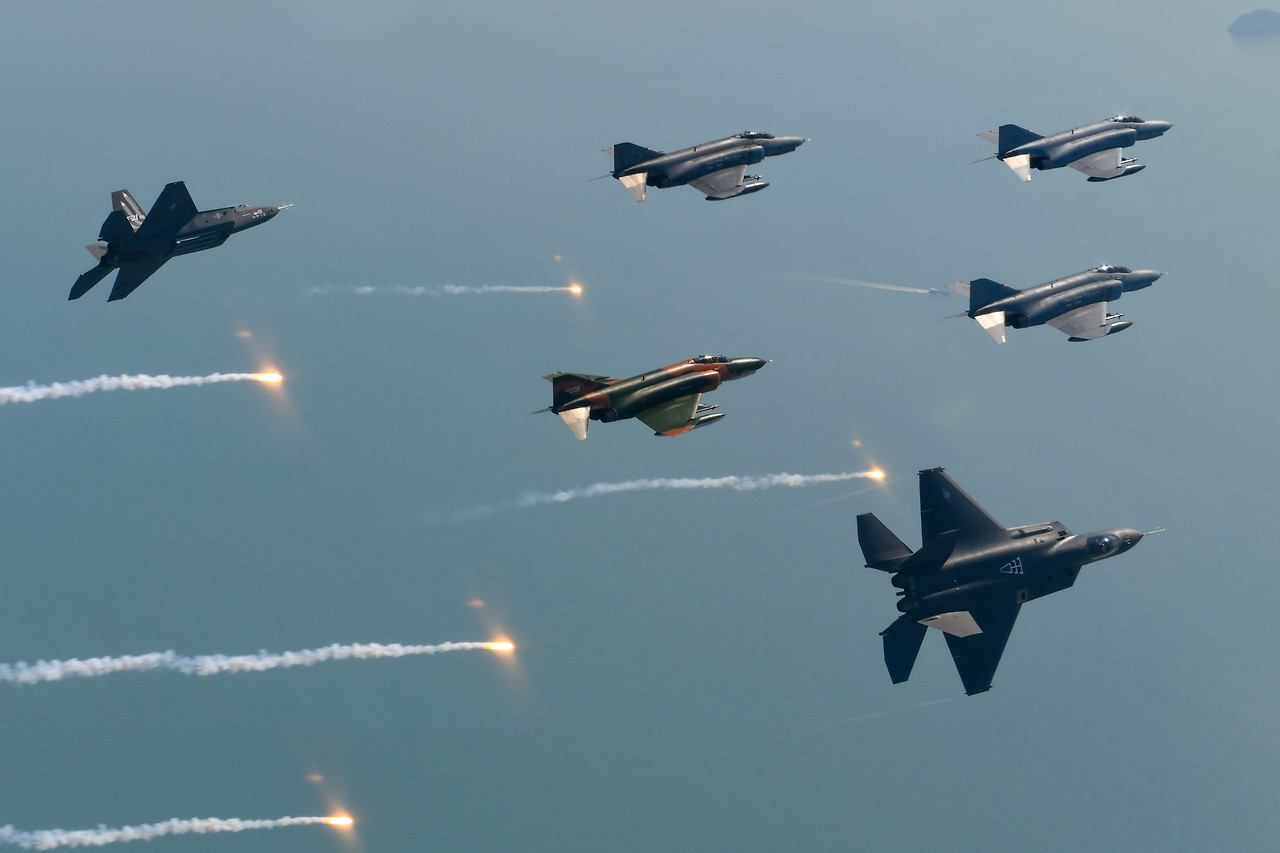
Speaking again today, the ROKAF Chief of Staff reflected: “The Phantom, introduced with fervent desire and active support from people longing for strong national security, has steadfastly defended the skies of the Republic of Korea for over 50 years, repaying the citizens’ support. This year’s final journey of the Phantom will be recorded as the most magnificent retirement of a fighter jet in the history of the Air Force.”
Despite life-extension initiatives including airframe strengthening, enabling the F-4 to go well beyond the original design life of 4,000 hours, time has caught up with the Phantom. After Japan retired its F-4s in late 2020, Iran remains the biggest Phantom operator, while, within NATO, Greece and Turkey each retain a single squadron of the jets.
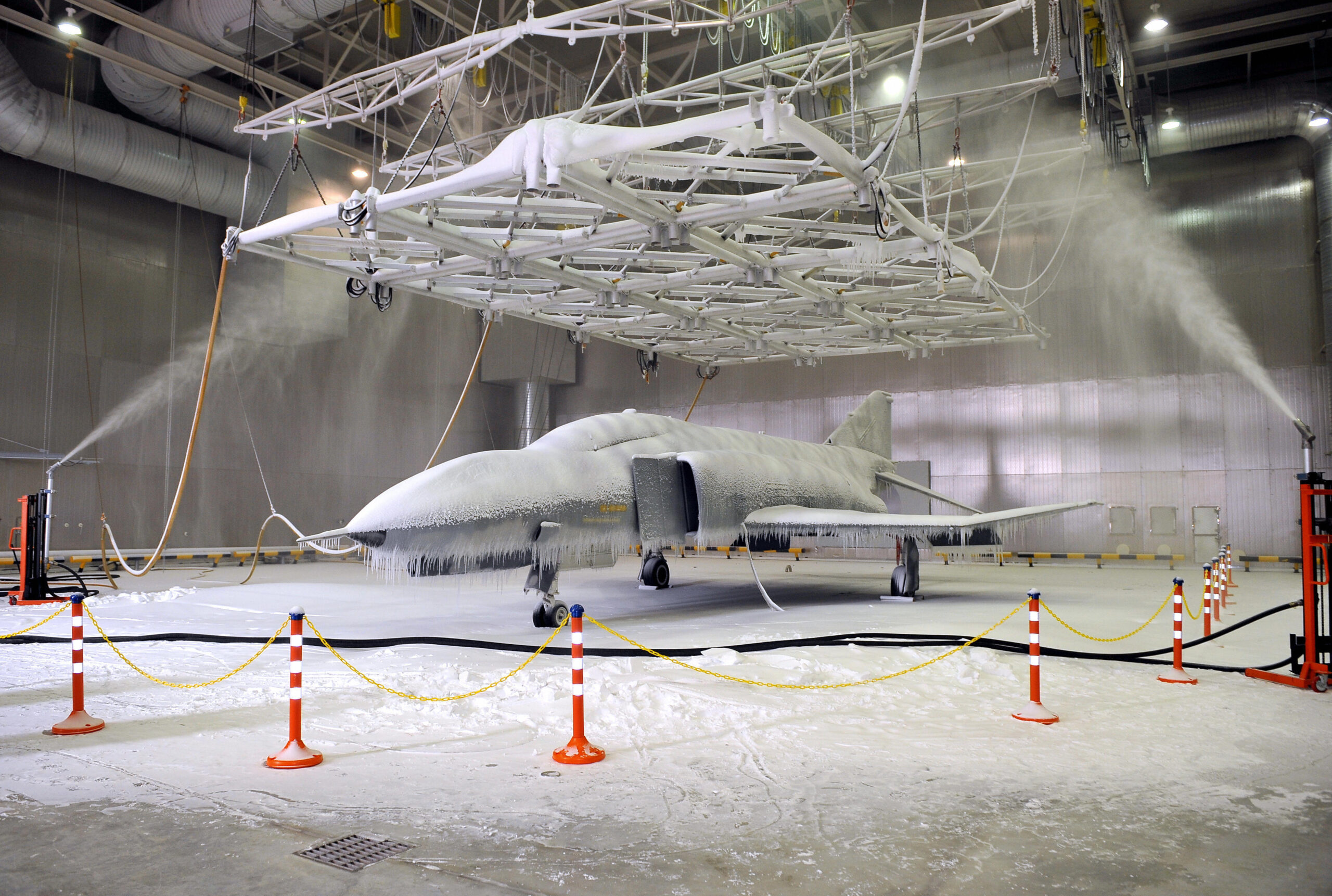
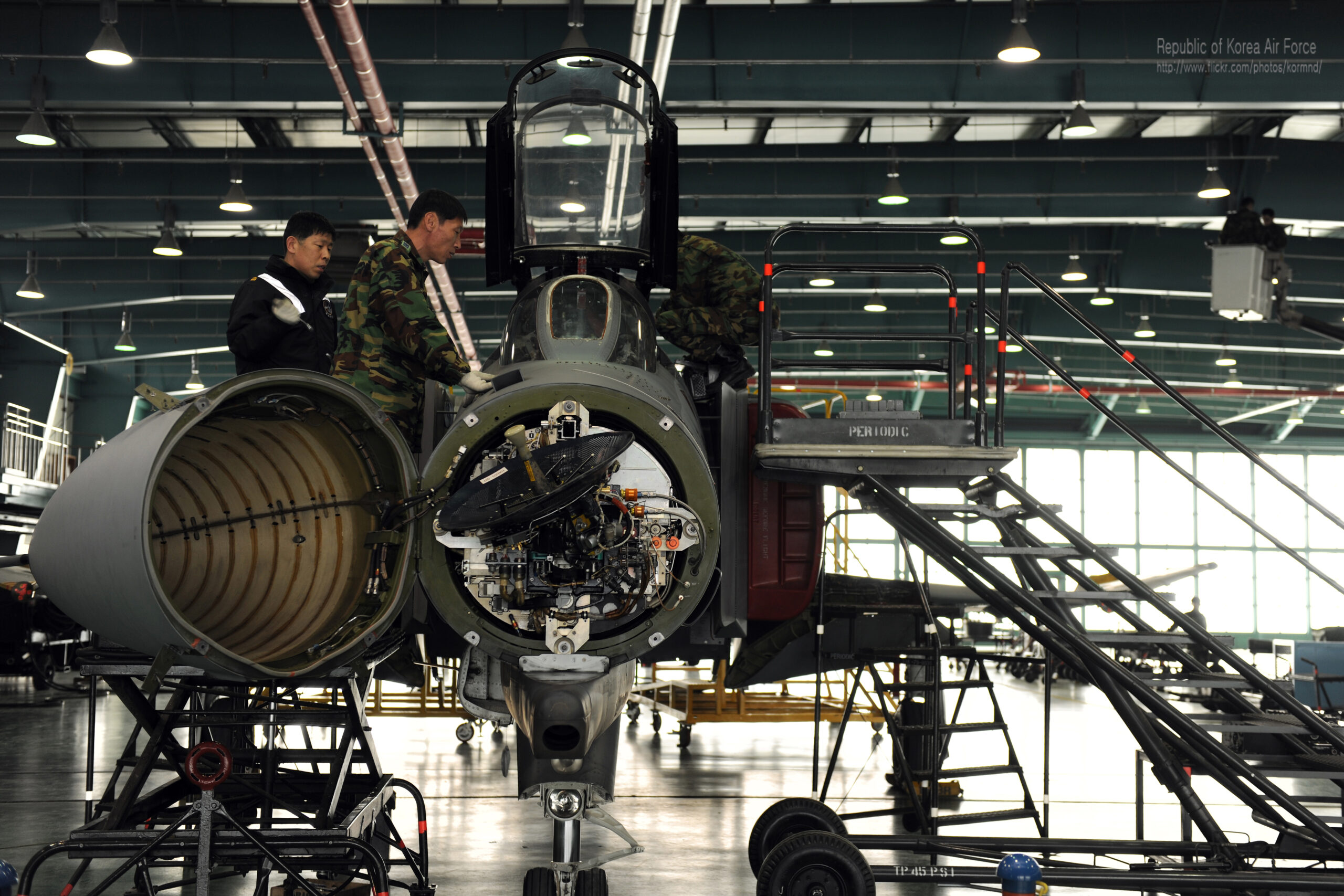
As South Korea’s F-4 bows out, the last words go to Phantom pilot Lt. Col. Kim Tae-hyung, the commander of the 153rd Fighter Squadron, 10th Fighter Wing: “As the last commander of the last Phantom Squadron, it was an honor to witness the Phantom’s final moments. Though its mission has concluded, the majesty that once overwhelmed the enemy and the thunderous engine roar that resonated through the earth will forever endure in the hearts of the ‘Phantom Men’. With unwavering pride as a Phantom pilot, I am committed to steadfastly defending the Republic of Korea.”
“Phantom, Forever!”
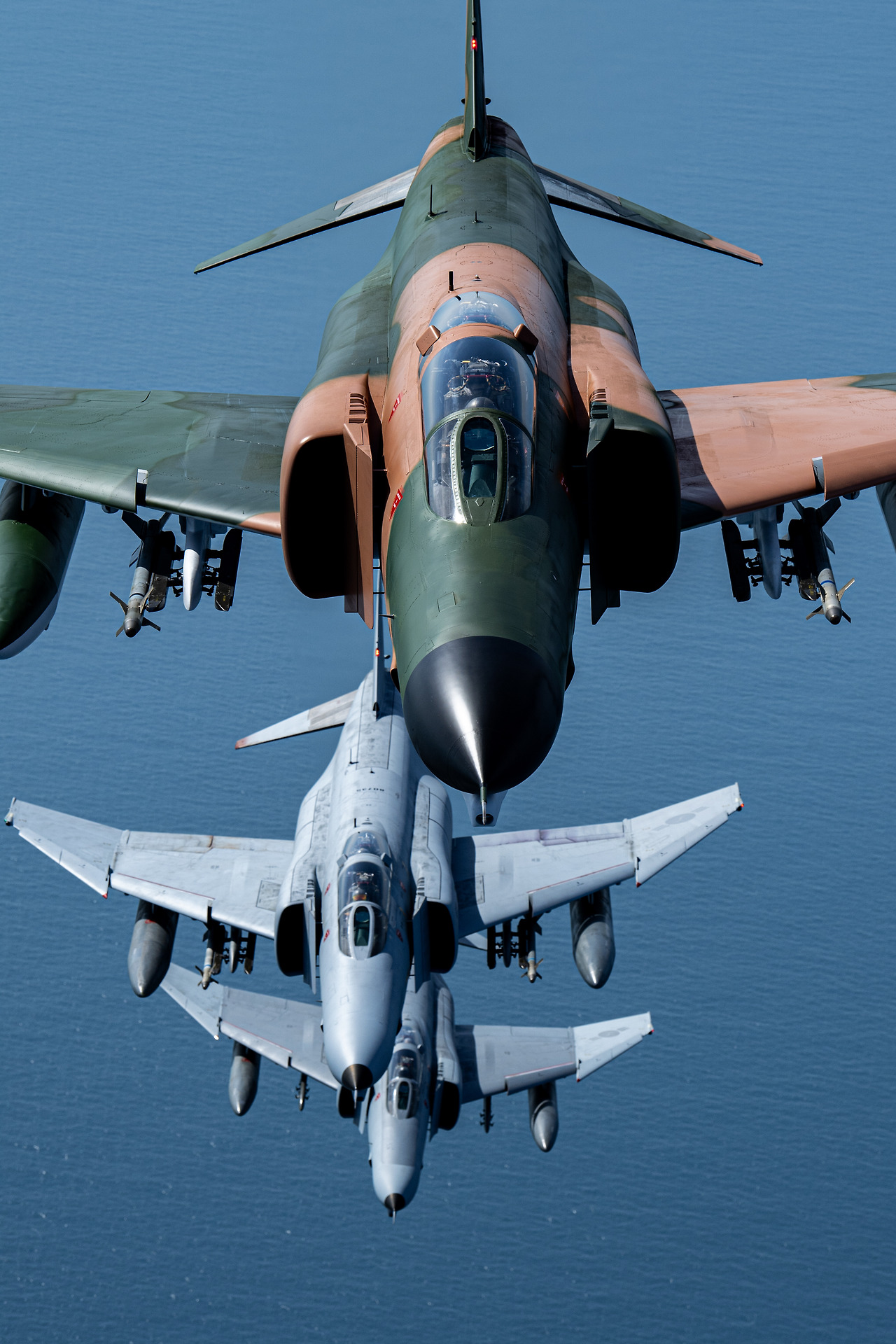
Contact the author: thomas@thewarzone.com
